Utilize this comprehensive nursing care plan and management guide to provide optimal care for patients with heart failure. Gain valuable insights on nursing assessment, interventions, goals, and nursing diagnosis specifically tailored for heart failure in this guide.
What is Heart Failure?
Heart failure (HF) or Congestive Heart Failure (CHF) is a physiologic state in which the heart cannot pump enough blood to meet the body’s metabolic needs following any structural or functional impairment of ventricular filling or ejection of blood.
Heart failure results from changes in the systolic or diastolic function of the left ventricle. The heart fails when, because of intrinsic disease or structural, it cannot handle a normal blood volume or, in the absence of disease, cannot tolerate a sudden expansion in blood volume. Heart failure is a progressive and chronic condition managed by significant lifestyle changes and adjunct medical therapy to improve quality of life. Heart failure is caused by various cardiovascular conditions such as chronic hypertension, coronary artery disease, and valvular disease.
Heart failure is not a disease itself. Instead, the term refers to a clinical syndrome characterized by manifestations of volume overload, inadequate tissue perfusion, and poor exercise tolerance. Whatever the cause, pump failure results in hypoperfusion of tissues, followed by pulmonary and systemic venous congestion.
Clinical Manifestations
Heart failure can affect the heart’s left side, right side, or both sides. Though, it usually affects the left side first. The signs and symptoms of heart failure are defined based on which ventricle is affected—left-sided heart failure causes a different set of manifestations than right-sided heart failure.
Left-Sided Heart Failure
- Dyspnea on exertion
- Pulmonary congestion, pulmonary crackles
- Cough that is initially dry and nonproductive
- Frothy sputum that is sometimes blood-tinged
- Inadequate tissue perfusion
- Weak, thready pulse
- Tachycardia
- Oliguria, nocturia
- Fatigue
Right-Sided Heart Failure
- Congestion of the viscera and peripheral tissues
- Edema of the lower extremities
- Enlargement of the liver (hepatomegaly)
- Ascites
- Anorexia, nausea
- Weakness
- Weight gain (fluid retention)
Because heart failure causes vascular congestion, it is often called congestive heart failure, although most cardiac specialists no longer use it. Other terms used to denote heart failure include chronic heart failure, cardiac decompensation, cardiac insufficiency, and ventricular failure.
Nursing Care Plans & Management
Nurses greatly influence the outcomes of patients with heart failure through education and monitoring despite high morbidity and mortality rates. Education empowers patients, improving adherence and preventing complications. Vigilant monitoring enables early intervention, reducing risks. Nurses play a crucial role in reducing HF morbidity and mortality.
Nursing Problem Priorities
The following are the nursing priorities for patients with congestive heart failure:
- Improve myocardial contractility and perfusion. Enhance heart’s pumping function to ensure adequate blood flow to organs through medications, monitoring vital signs, and optimizing fluid balance.
- Manage fluid volume. Monitor fluid balance, assess for signs of retention, administer diuretics, monitor weight, and promote adherence to a low-sodium diet.
- Prevent complications. Monitor for and manage complications such as pulmonary edema, arrhythmias, and thromboembolism through close monitoring, medication administration, and patient education.
- Promote activity tolerance. Encourage 30 minutes of daily physical activity (as tolerated), collaborate on a schedule, and prioritize activities.
- Reduce anxiety. Provide comfort, psychological support, and teach anxiety management techniques.
- Minimize powerlessness. Encourage patient expression of concerns and involve them in decision-making.
- Provide disease information and prevention education. Educate patients about heart failure, its impact, prognosis, lifestyle modifications, medication adherence, and seeking timely care to prevent worsening of symptoms.
Nursing Assessment
Nursing assessment for patients with heart failure emphasizes evaluating the efficacy of treatment and the patient’s adherence to self-management strategies. Monitoring and reporting worsening signs and symptoms of heart failure are essential for adjusting therapy. Additionally, the nurse addresses the patient’s emotional well-being, as heart failure is a chronic condition linked to depression and psychosocial concerns
Health History
- Assess the signs and symptoms such as dyspnea, shortness of breath, fatigue, and edema.
- Assess for sleep disturbances, especially sleep suddenly interrupted by shortness of breath.
- Explore the patient’s understanding of HF, self management strategies, and the ability and willingness to adhere to those strategies.
Physical Examination
- Auscultate the lungs for presence of crackles and wheezes.
- Auscultate the heart for the presence of an S3 heart sound.
- Assess JVD for presence of distention.
- Evaluate the sensorium and level of consciousness.
- Assess the dependent parts of the patient’s body for perfusion and edema.
- Assess the liver for hepatojugular reflux.
- Measure the urinary output carefully to establish a baseline against which to assess the effectiveness of diuretic therapy.
- Weigh the patient daily in the hospital or at home.
Assess for the following subjective and objective data:
- Increased heart rate (tachycardia)
- ECG changes
- Changes in BP (hypotension/hypertension)
- Extra heart sounds (S3, S4)
- Decreased urine output (oliguria)
- Diminished peripheral pulses
- Orthopnea
- Crackles
- Jugular vein distention
- Edema
- Chest pain
- Weakness
- Fatigue
- Changes in vital signs
- Presence of dysrhythmias
- Dyspnea
- Pallor
- Diaphoresis
- Weight gain
- Respiratory distress
- Abnormal breath sounds
Assess for factors related to the cause of congestive heart failure:
- Altered circulation
- Altered myocardial contractility/inotropic changes
- Alterations in rate, rhythm, electrical conduction
- Decreased cardiac output
- Structural changes (e.g., valvular defects, ventricular aneurysm)
- Poor cardiac reserve
- Side effects of medication
- Imbalance between oxygen supply/demand
- Prolonged bed rest
- Immobility
- Reduced glomerular filtration rate (decreased cardiac output)/increased antidiuretic hormone (ADH) production, and sodium/water retention.
- Changes in glomerular filtration rate
- Use of diuretics
- Lack of understanding
- Misconceptions about interrelatedness of cardiac function/disease/failure
- Invasive procedures
- Prolonged hospitalization
- Alveolar edema secondary to increased ventricular pressure
- Retained secretions
- Increased metabolic rate secondary to pneumonia
Nursing Diagnosis
Following a thorough assessment, a nursing diagnosis is formulated to specifically address the challenges associated with heart failure based on the nurse’s clinical judgement and understanding of the patient’s unique health condition. While nursing diagnoses serve as a framework for organizing care, their usefulness may vary in different clinical situations. In real-life clinical settings, it is important to note that the use of specific nursing diagnostic labels may not be as prominent or commonly utilized as other components of the care plan. It is ultimately the nurse’s clinical expertise and judgment that shape the care plan to meet the unique needs of each patient, prioritizing their health concerns and priorities. However, if you still find value in utilizing nursing diagnosis labels, here are some examples to consider:
- Decreased Cardiac Output related to impaired myocardial function as evidenced by signs of fatigue, dyspnea, and abnormal heart rate or blood pressure.
- Risk for Ineffective Health Maintenance related to lack of knowledge regarding diagnostic and laboratory procedures necessary for monitoring heart failure status.
- Impaired Gas Exchange related to fluid overload and pulmonary congestion as evidenced by [e.g., orthopnea, paroxysmal nocturnal dyspnea, and hypoxemia].
- Excess Fluid Volume related to compromised heart function and renal perfusion as evidenced by [e.g., peripheral edema, ascites, and weight gain].
- Acute Pain related to decreased myocardial oxygenation as evidenced by [e.g., reports of chest pain or discomfort exacerbated by physical exertion or stress].
- Ineffective Tissue Perfusion (cardiopulmonary) related to decreased cardiac output as evidenced by [e.g., altered mental status, cool and clammy skin, and decreased urine output].
- Imbalanced Nutrition: Less Than Body Requirements related to dietary restrictions and fluid management in heart failure as evidenced by [e.g., confusion about low-sodium diet recommendations and fluid intake limits].
- Activity Intolerance related to imbalance between oxygen supply and demand as evidenced by [e.g., repotrs of fatigue, dyspnea on exertion, and decreased endurance].
- Anxiety related to changes in health status and uncertainty about the future due to heart failure diagnosis as evidenced by [e.g., patient’s verbalization of worries about their condition, noticeable restlessness, frequent questions about their prognosis, and expressed concerns regarding the effects of their illness on family roles and responsibilities].
Nursing Goals
Major goals for patients with heart failure include promoting physical activity, reducing fatigue, alleviating symptoms of fluid overload, managing anxiety, fostering patient empowerment in decision-making, and providing comprehensive health education to the patient and their family. Goals and expected outcomes may also include:
- The patient will exhibit optimal cardiac output, indicated by vital signs within acceptable ranges, absence/control of dysrhythmias, and absence of heart failure symptoms.
- The patient will engage in activities that reduce cardiac workload.
- The patient will actively participate in desired activities and meet their own self-care needs.
- The patient will maintain stable fluid volume, with balanced intake and output, clear/clearing breath sounds, vital signs within acceptable range, stable weight, and absence of edema.
- The patient will verbalize understanding of individual dietary and fluid restrictions.
- The patient will prioritize maintaining skin integrity.
- The patient will effectively manage pain.
- The patient will identify strategies to reduce anxiety.
- The patient will exhibit improved concentration.
- The patient will actively participate in their treatment regimen based on their abilities and situation.
Nursing Interventions and Actions
Therapeutic interventions and nursing actions for patients with congestive heart failure may include:
- 1. Initiating Interventions for Decrease in Cardiac Output
- 2. Monitoring Diagnostic Procedures and Laboratory Studies
- 3. Administering Medication and Providing Pharmacological Interventions
- 4. Maintaining or Improving Respiratory Function
- 5. Managing Fluid Volume and Electrolyte Imbalance
- 6. Providing Perioperative Nursing Care
- 7. Managing Acute Pain and Discomfort
- 8. Promoting Adequate Tissue Perfusion and Managing Decreased Cardiac Tissue Perfusion
- 9. Promoting Optimal Nutritional Balance and Adherence to Low-Sodium Diet
- 10. Maintaining Skin Integrity & Preventing Pressure Ulcers
- 11. Managing Decreased Tolerance to Activity and Fatigue
- 12. Reducing Anxiety, Fear and Improving Coping
- 13. Initiating Health Teaching and Patient Education
1. Initiating Interventions for Decreased Cardiac Output
A decrease in cardiac output in heart failure occurs because the heart muscle weakens or becomes stiff, impairing its ability to contract and relax properly. Initiating nursing interventions for a decrease in cardiac output in patients with congestive heart failure is important because it can help prevent the progression of the disease and decrease the risk of complications. Early recognition and management of decreased cardiac output can improve patient outcomes and quality of life.
Nursing Diagnosis
Here are some sample nursing diagnosis to help you write your nursing diagnostic statements:
- Decreased Cardiac Output related to impaired myocardial function as evidenced by signs of fatigue, dyspnea, and abnormal heart rate or blood pressure.
- Knowledge Deficit related to insufficient understanding of heart failure management and self-monitoring techniques as evidenced by inability to correctly take and record daily pulse and blood pressure, and misunderstanding of medication regimens.
1. Auscultate apical pulse, assess heart rate.
Tachycardia is an early sign of heart failure. An increase in heart rate is the body’s first response to compensate for reduced cardiac output (CO). Initially, this compensatory response has a favorable effect on cardiac output, but over time, persistent tachycardia is harmful and may worsen heart failure. Appropriate heart rate control has been associated with better clinical outcomes, including decreased hospitalizations and mortality (Yancy et al., 2017).
2. Obtain a comprehensive health history focusing on HF symptoms and self-management strategies.
Understanding the patient’s health history helps identify signs and symptoms of worsening HF and assess the patient’s understanding and adherence to self-management strategies.
3. Note heart sounds.
An extra heart sound S3 or ventricular gallop may be heard during auscultation (S3 mixtape here). This is caused by a large volume of fluid entering the ventricle at the beginning of diastole (Drazner et al., 2003). S1 and S2 may be weak because of decreased pumping action. Murmurs may reflect valvular incompetence. Auscultate the heart for S3 heart sound and assess heart rate and rhythm. S3 heart sound is an early sign of increased blood volume in the ventricle, indicating worsening HF. Monitoring heart rate and rhythm helps identify abnormalities that may contribute to decreased cardiac output and guides treatment decisions.
4. Assess rhythm and document dysrhythmias if telemetry is available.
Both atrial and ventricular dysrhythmias are common. Myocardial stretch, fibrosis, and chamber dilation all alter the electrical paths of the heart. Atrial fibrillation (AF) is common in patients with HF, and occurrence increases with HF severity (Maisel et al., 2003; Yancy et al., 2007). Atrial fibrillation promotes thrombus formation within the atria. Other common dysrhythmias associated with HF include premature atrial contractions, paroxysmal atrial tachycardia, PVCs, multifocal atrial tachycardia, ventricular tachycardia, and ventricular fibrillation.
5. Assess for palpitations or irregular heartbeat.
Palpitations can occur due to dysrhythmias secondary to chronic heart failure. Atrial fibrillation is the most common dysrhythmia in HF. It can also be a compensatory mechanism as the failing heart tries to accommodate for the lack of flow with a faster HR (Kemp et al., 2012). Patients may report fast or irregular heartbeat.
6. Palpate peripheral pulses.
Decreased cardiac output may be reflected in diminished radial, popliteal, dorsalis pedis, and post-tibial pulses. Marked diminution or absence of peripheral pulses can indicate severely depressed stroked volume or the presence of severe occlusive vascular disease (Leier, 2007). Pulses may be fleeting or irregular to palpation, and pulsus alternans (a strong beat alternating with a weak beat) may be present. Evaluating peripheral pulses and skin perfusion helps determine the adequacy of peripheral perfusion. Decreased pulse volume and cool, pale, or cyanotic skin may indicate decreased cardiac output and guide interventions.
7. Monitor blood pressure (BP).
In acute heart failure, BP may be elevated because of increased systemic vascular resistance (SVR). BP is often used to determine interventions (e.g., vasodilators, vasopressors, etc.). In chronic heart failure, BP is used as a parameter to determine the adequacy or excess dosage of pharmacological therapy (e.g., administration of ACE inhibitors).
8. Inspect the skin for mottling.
Low cardiac output can result in decreased perfusion to the skin of the extremities and may result in mottling – a blue or gray coloring of the skin (Albert et al., 2010). Because of increased tissue capillary oxygen extraction in chronic HF, the skin may appear dusky.
9. Inspects the skin for pallor or cyanosis.
Cool or clammy feeling to touch can occur with diminished perfusion; hypoperfusion in the limb will render pallor (Leier, 2007; Bolger, 2003). This finding, along with other signs of systemic hypoperfusion, will assist the primary care provider to choose proper pharmacotherapy and interventions needed to manage the patient’s condition.
10. Monitor urine output, noting decreasing output and concentrated urine.
Urine output may be decreased due to decreased renal perfusion – kidneys react to reduced cardiac output by retaining water and sodium. The patient may also develop resistance to diuretics, resulting in decreased urinary output (De Bruyne et al., 2003). Urine output is usually low during the day because fluid shifts into tissues and increases at night (nocturia) due to increased renal perfusion during supine position (Redeker et al., 2012).
11. Note changes in sensorium: lethargy, confusion, disorientation, anxiety, and depression.
Cerebral hypoperfusion occurs because of hypoxia to the brain from the decreased cardiac output. The patient may report this as confusion, forgetfulness, or restlessness. Through assessment is necessary to evaluate for possible related conditions, including psychological disorders. Depression is common among patients with heart failure and can lead to poor adherence to treatment plans. Studies have shown depression is 4 to 5 times more common in patients with heart failure and confers a twofold risk of mortality and higher readmission rates (Joynt et al., 2004; Rutledge et al., 2006).
12. Evaluate the patient’s level of consciousness for changes that may indicate decreased cerebral perfusion.
Low cardiac output in HF can result in decreased oxygen delivery to the brain, potentially causing alterations in consciousness. Assessing the patient’s level of consciousness helps detect any changes and guides appropriate interventions.
13. Examine lower extremities for edema and rate its severity.
Edema is a common manifestation of HF. Assessing its presence and severity helps evaluate fluid status and guide diuretic therapy and fluid management.
14. Assess the abdomen for tenderness, hepatomegaly, and signs of ascites.
Abdominal assessment provides information on potential complications of HF, such as hepatic congestion and ascites. Identifying these findings guides interventions and treatment decisions.
15. Assess jugular vein distention (JVD).
JVD is assessed to estimate central venous pressure and identify right ventricular failure. Abnormal JVD, defined as distention greater than 4 cm above the sternal angle, suggests increased venous pressure and guides treatment decisions.
16. Monitor results of laboratory and diagnostic tests.
Signs and symptoms of heart failure are not highly specific and may mimic many other medical conditions (Yancy et al., 2017). The goal in diagnosis is to find the underlying cause of HF and the patient’s response to treatment.
17. Monitor oxygen saturation and ABGs.
Baseline oxygen saturation is useful in establishing the diagnosis and severity of heart failure in acute settings (Masip et al., 2012; Milo-Cotter et al., 2009). Additionally, this provides information regarding the heart’s ability to perfuse distal tissues with oxygenated blood.
18. Give oxygen as indicated by the patient’s symptoms, oxygen saturation, and ABGs.
Supplemental oxygen increases oxygen availability to the myocardium and can help relieve symptoms of hypoxemia, ischemia, and subsequent activity intolerance (Giordano, 2005; Haque et al., 1996). The need is based on the degree of pulmonary congestion and resulting hypoxia. Ongoing pulse oximetry monitors the need for and effectiveness of oxygen supplementation.
19. Provide a restful environment and encourage periods of rest and sleep; assist with activities.
Minimizing controllable stressors and unnecessary disturbances reduces cardiac workload and oxygen demand (Rogers et al., 2015). Physical and emotional rest allows the patient to conserve energy. The degree of rest depends on the severity of HF. Patients with severe HF may need to rest in bed, while those with mild to moderate HF can be ambulatory with limited activity.
20. Encourage rest, semirecumbent in bed or chair. Assist with physical care as indicated.
During acute or refractory HF, physical rest should be maintained to improve cardiac contraction efficiency and decrease myocardial oxygen demand/ consumption and workload. Enforce complete bed rest when necessary to decrease the cardiac workload on acute symptomatic attacks of HF.
21. Provide a quiet environment: explain therapeutic management, help the patient avoid stressful situations, listen, and respond to expressions of feelings.
Psychological rest helps reduce emotional stress, which can produce vasoconstriction, elevating BP and increasing heart rate.
22. Assist the patient in assuming a high Fowler’s position.
Allows for better chest expansion, thereby improving pulmonary capacity. In this position, the venous return to the heart is reduced, pulmonary congestion is alleviated, and pressure on the diaphragm is minimized. Additionally, heart failure with pulmonary congestion can cause a chronic nonproductive cough worsening in the recumbent position (Platz et al., 2017; Picano et al., 2010).
23. Check for calf tenderness, diminished pedal pulses, swelling, local redness, or pallor of extremity.
The risk for thrombophlebitis increases with enforced bed rest, reduced cardiac output, and venous pooling.
24. Elevate legs, avoiding pressure under the knee or in a position comfortable to the patient.
Decreases venous return and preload and may reduce the incidence of thrombus or embolus formation.
25. Reposition patient every two (2) hours.
For patients under bed rest, prolonged immobility should be avoided because of its deconditioning effects and risk, such as pressure ulcers, especially in patients with edema. Decreased circulation in edematous areas also increases the risk of pressure ulcers.
26. Provide bedside commode, provide stool softeners as ordered. Have patient avoid activities eliciting a vasovagal response (straining during defecation, holding breath during position changes).
Using a bedside commode decreases work of getting to the bathroom or struggling to use a bedpan. Patients with HF have autonomic dysfunction. Valsalva maneuver or similar behaviors reduces mean arterial blood pressure and cerebral blood flow, leaving patients vulnerable to hypoperfusion, ischemia, and stroke (Serber et al., 2014).
27. Encourage active and passive exercises. Increase activity as tolerated.
For acute HF, bed rest may be temporarily indicated. Otherwise, a total of 30 minutes of physical activity every day should be encouraged (Yancy et al., 2017).
28. Administer medications as indicated.
See Pharmacologic Management
29. Withhold digitalis preparation as indicated, and notify the physician if marked changes occur in cardiac rate or rhythm or signs of digitalis toxicity occur.
The incidence of toxicity is high (20%) because of the narrow margin between therapeutic and toxic ranges. Digoxin may have to be discontinued in the presence of toxic drug levels, a slow heart rate, or low potassium level.
30. Administer IV solutions, restricting total amount as indicated. Avoid saline solutions.
Because of existing elevated left ventricular pressure, the patient may not tolerate increased fluid volume (preload). The amount of fluid administered should be monitored closely (Bikdeli et al., 2015; Albert, 2012). Patients with HF also excrete less sodium, which causes fluid retention and increases cardiac workload.
31. Monitor for signs and symptoms of fluid and electrolyte imbalances.
Fluid shifts and the use of diuretics can lead to excessive diuresis and may lead to electrolyte imbalances, such as hypokalemia (Oh et al., 2015). Signs of hypokalemia include ventricular dysrhythmias, hypotension, and generalized weakness. Hyperkalemia can occur with the use of ACE inhibitors, ARBs, or spironolactone.
32. Monitor serial electrocardiogram (ECG) and chest x-ray changes.
Can indicate the underlying cause of HF. ST-segment depression and T-wave flattening can develop because of increased myocardial oxygen demand, even if no coronary artery disease is present. A chest X-ray may show an enlarged heart and pulmonary congestion.
33. Measure cardiac output and other functional parameters as indicated.
Cardiac index, preload, afterload, contractility, and cardiac work can be measured noninvasively using the thoracic electrical bioimpedance (TEB) technique. Useful in determining the effectiveness of therapeutic interventions and response to activity.
34. Prepare for insertion and maintenance of pacemaker, if indicated.
It may be necessary to correct bradydysrhythmias unresponsive to drug intervention. This can aggravate congestive failure and/or produce pulmonary edema.
35. Assist with mechanical circulatory support systems, such as the placement of a ventricular assist device (VAD).
A battery-powered ventricular assist device (VAD) is positioned between the cardiac apex and the descending thoracic or abdominal aorta. This device receives blood from the left ventricle (LV) and ejects it into the systemic circulation, often allowing the patient to resume a nearly normal lifestyle while awaiting recovery, transplantation, or waiting for a decision (Yancy et al., 2017).
36. Recognize that some patients may need an intra-aortic balloon pump (IABP), and provide assistance.
An intra-aortic balloon pump (IABP) may be inserted as temporary support to the failing heart in a critically ill patient with potentially reversible HF (Reid et al., 2005). When caring for a patient managed with IABP, the nurse must continually assess and measure the often subtle changes in patient’s condition. This requires expert knowledge of the cardiovascular system, therapeutic effects of IABP, and potential adverse events (Lewis et al., 2009). With end-stage HF, cardiac transplantation may be indicated.
37. Withhold digitalis preparation as indicated, and notify the physician if marked changes occur in cardiac rate or rhythm or signs of digitalis toxicity occur.
The incidence of toxicity is high (20%) because of the narrow margin between therapeutic and toxic ranges. Digoxin may have to be discontinued in the presence of toxic drug levels, a slow heart rate, or low potassium level.
38. Administer IV solutions, restricting total amount as indicated. Avoid saline solutions.
Because of existing elevated left ventricular pressure, the patient may not tolerate increased fluid volume (preload). The amount of fluid administered should be monitored closely (Bikdeli et al., 2015; Albert, 2012). Patients with HF also excrete less sodium, which causes fluid retention and increases cardiac workload.
39. Monitor for signs and symptoms of fluid and electrolyte imbalances.
Fluid shifts and the use of diuretics can lead to excessive diuresis and may lead to electrolyte imbalances, such as hypokalemia (Oh et al., 2015). Signs of hypokalemia include ventricular dysrhythmias, hypotension, and generalized weakness. Hyperkalemia can occur with the use of ACE inhibitors, ARBs, or spironolactone.
40. Measure cardiac output and other functional parameters as indicated.
Cardiac index, preload, afterload, contractility, and cardiac work can be measured noninvasively using the thoracic electrical bioimpedance (TEB) technique. Useful in determining the effectiveness of therapeutic interventions and response to activity.
2. Monitoring Diagnostic Procedures and Laboratory Studies
Monitoring diagnostic procedures and laboratory studies is an essential aspect of caring for patients with heart failure. These assessments help healthcare professionals evaluate the severity of the condition, track progress, and guide treatment decisions. This helps healthcare providers make informed decisions about the patient’s care and adjust treatment plans as necessary.
1. Blood urea nitrogen (BUN) and creatinine.
Elevation of BUN or creatinine reflects decreased renal perfusion, which may be caused by HF or medications (e.g., diuretics, ACE inhibitors).
2. Liver function studies (AST, LDH).
May detect alterations in liver function which can demonstrate possible cause or effect. May also be elevated because of liver congestion and indicate a need for smaller dosages of medications.
3. Prothrombin time (PT) and activated partial thromboplastin time (aPTT) coagulation studies.
Helps in identifying patients at risk for excessive clot formation and measures changes in coagulation processes or the effectiveness of anticoagulant therapy.
4. Atrial natriuretic peptide (ANP).
ANP is a hormone secreted from the right atrial cells when pressure increases. It is increased in congestive HF.
5. Beta-type natriuretic peptide (BNP).
BNP is secreted from the cardiac ventricles as a response to ventricular volume and fluid overload (Cowie & Mendez, 2002). BNP levels in the blood increases when symptoms of HF worsen.
6. Electrocardiogram (ECG).
Can indicate the underlying cause of HF. ST-segment depression and T-wave flattening can develop because of increased myocardial oxygen demand, even if no coronary artery disease is present.
7. Echocardiogram.
This ultrasound test provides detailed images of the heart’s structure and function, including the size and thickness of the heart chambers, the strength of the heart’s contractions, and the ejection fraction (the percentage of blood pumped out with each heartbeat). Echocardiograms are regularly performed to assess cardiac function and monitor changes over time.
8. Cardiac stress test.
This test evaluates the heart’s response to physical exertion or pharmacological stress. It is used to assess exercise capacity, identify exercise-induced arrhythmias, and determine if there are any underlying coronary artery blockages contributing to heart failure symptoms.
9. Complete blood count (CBC).
A CBC measures various components of the blood, including red and white blood cells and platelets. It helps identify anemia, infection, or other abnormalities that may impact heart failure management.
10. Kidney function tests.
Blood tests such as serum creatinine and blood urea nitrogen (BUN) are used to assess kidney function. Impaired kidney function is common in heart failure and may affect treatment options and medication dosages.
11. Electrolyte levels.
Blood tests measure electrolyte levels, such as sodium, potassium, and magnesium. Imbalances in these electrolytes can affect heart rhythm and cardiac function.
12. Chest X-ray
A chest X-ray may show an enlarged heart and pulmonary congestion.
3. Administering Medication and Providing Pharmacological Interventions
Administering medication and providing pharmacological interventions are critical components of caring for patients with heart failure. Medications are prescribed to manage symptoms, improve heart function, prevent complications, and enhance the patient’s quality of life.
1. Diuretics
Diuretics are first-line drugs for all patients with signs of volume overload. Diuretics work by reducing blood volume, therefore, decreasing venous pressure, arterial pressure, pulmonary edema, peripheral edema, and cardiac dilation (Ellison et al., 2017; Brater, 2000). Diuretics are essential in managing fluid overload in patients with heart failure. Loop diuretics, thiazide diuretics, and aldosterone antagonists have different mechanisms of action in the kidney, promoting increased urine production and removal of excess extracellular fluid. Administering the prescribed diuretic helps alleviate symptoms of fluid overload. Data from several small controlled trials show that conventional diuretics appear to reduce the risk of death and worsening heart failure compared to a placebo in patients with CHF. About 80 deaths may be avoided for every 1000 people treated. Diuretics also increase the ability to exercise by about 28% to 33% more than other active drugs (Faris et al., 2012). Commonly used diuretics for patients with heart failure include:
| Diuretic Type | Examples | Mechanism of Action | Uses in Heart Failure | Adverse Effects |
|---|---|---|---|---|
| Thiazide Diuretics | Hydrochlorothiazide (Microside) | Inhibit sodium reabsorption in the distal convoluted tubule, promoting excretion of sodium and water. | Used for long-term therapy in moderate edema; effective when GFR is adequate. | Hypokalemia (increases risk of digoxin-induced dysrhythmias); ineffective in low GFR and severely reduced cardiac output. |
| Loop Diuretics | Furosemide (Lasix), Ethacrynic Acid (Edecrin) | Inhibit the Na⁺-K⁺-2Cl⁻ cotransporter in the ascending limb of the loop of Henle, leading to significant diuresis. | Preferred for severe heart failure; effective even in low GFR. | Hypokalemia, severe hypotension (due to excessive fluid loss); reduces alveolar congestion enhancing gas exchange. |
| Potassium-Sparing Diuretics | Spironolactone (Aldactone) | Antagonize aldosterone receptors in the collecting ducts, reducing sodium reabsorption and potassium excretion. | Counteracts potassium loss from thiazide and loop diuretics; reduces risk of digoxin-induced dysrhythmias. | Hyperkalemia (principal adverse effect). |
Nursing interventions and actions for patients taking diuretics may include:
- Monitor and document the patient’s fluid intake and output, including daily weight measurements.
Monitoring and documenting fluid intake and output, along with daily weight measurements, are crucial in evaluating the effectiveness of diuretic therapy. These parameters help assess the response to diuretics, determine the need for dosage adjustments, and identify any excessive fluid retention or depletion. Changes in weight can be an early indicator of fluid shifts. Tracking fluid intake and output provides valuable information on fluid balance. Comparing intake and output with weight changes helps evaluate the effectiveness of diuretic therapy and guides fluid management decisions. - Monitor serum potassium levels regularly and report any abnormalities.
Certain diuretics, such as loop diuretics and thiazide diuretics, increase potassium excretion, potentially leading to hypokalemia. Regular monitoring of serum potassium levels allows for early detection of imbalances and enables prompt intervention, such as adjusting the diuretic dosage or prescribing potassium supplements, to maintain optimal electrolyte balance. - Educate the patient about the importance of adhering to a low-sodium diet and restricting fluid intake.
A low-sodium diet, along with fluid restriction, helps reduce fluid overload and decrease the reliance on diuretics. Educating the patient about dietary modifications and fluid management strategies promotes self-care and empowers the patient to actively participate in their treatment plan, ultimately improving outcomes and reducing the burden of heart failure symptoms. - Assess for signs and symptoms of orthostatic hypotension and kidney injury.
Diuretic therapy can lead to orthostatic hypotension, especially in patients prone to volume depletion. Regular assessment for symptoms such as dizziness, lightheadedness, or syncope when changing positions helps identify orthostatic hypotension and guide appropriate interventions. Additionally, close monitoring for kidney injury, indicated by changes in urine output or renal function, is important to ensure early detection and management. - Monitor serum creatinine and potassium levels frequently, especially during the initiation of aldosterone antagonists (e.g., spironolactone).
Aldosterone antagonists, such as spironolactone, are potassium-sparing diuretics that require careful monitoring of serum creatinine and potassium levels. Close monitoring, particularly during the initial phase of treatment, helps detect any changes or abnormalities that may indicate renal impairment or potassium imbalance. Prompt intervention or dosage adjustments can then be made to ensure patient safety. - Evaluate the patient’s response to diuretic therapy and assess for the development or worsening of cardiorenal syndrome.
Monitoring the patient’s response to diuretic therapy is essential to evaluate its effectiveness in relieving
2. Vasodilators, arterial dilators, and combination drugs.
Vasodilators treat heart failure by increasing cardiac output, reducing circulating volume, and decreasing systemic vascular resistance – ultimately reducing ventricular workload. Commonly used vasodilators include:
- Isosorbide dinitrate (ISDN) [Nitro Dur, Isordil] causes selective dilation of veins. For patients with severe refractory HF, ISDN can reduce congestive symptoms and improve exercise capacity (Ziaeian et al, 2017; Nyolczas et al, 2017; Cohn et al, 1991). Watch out for adverse effects such as orthostatic hypotension and reflex tachycardia.
- Hydralazine [Apresoline] causes selective dilation of arterioles, therefore, can help improve cardiac output and renal blood flow (Herman, 2017; Jacobs, 1984). Hydralazine is always used in combination with ISDN (e.g., BiDil – a fixed-dose combination of hydralazine and ISDN).
- Nitroglycerin when given intravenously, is a powerful vasodilator that produces a dramatic reduction in venous pressure. It is also used to relieve acute severe pulmonary edema (Levy et al, 2007). Hypotension and reflex tachycardia are its main adverse effects.
- Sodium nitroprusside [Nitropress] rapidly dilates arterioles and veins. Arteriolar dilation reduces afterload and thereby increasing cardiac output. Venodilation reduces venous pressure, thereby reducing pulmonary and peripheral congestion. Note: Blood pressure must be monitored continuously when taking this drug.
- Nesiritide administration leads to a rapid and balanced vasodilatory effect, which results in a significant decrease in right and left ventricular filling pressures and systemic vascular resistance and at the same time in an increase in stroke volume and cardiac output without a change in heart rate. (Elkayam et al, 2002). Nesiritide treatment significantly increased left ventricular ejection fraction, cardiac index, and 24- and 72-hour urine volumes. The drug safely improves global cardiac and systemic function for patients with heart failure (Zhao et al, 2020).
3. Angiotensin-converting Enzyme Inhibitors (ACE Inhibitors) [benazepril (Lotensin), captopril (Capoten), lisinopril (Prinivil), enalapril (Vasotec), quinapril (Accupril), ramipril (Altace), moexipril (Univasc)] blocks the renin-angiotensin-aldosterone-system (RAAS) by inhibiting the conversion of angiotensin I to angiotensin II.
They decrease mortality, morbidity, hospitalizations, and symptoms in patients with heart failure (Yancy et al., 2017). These drugs also decrease the release of aldosterone and suppress the degradation of kinins. As a result, they improve hemodynamics and favorably alter cardiac remodeling. Additionally, observe for symptomatic hypotension, hyperkalemia, cough, and worsening renal function. Additional nursing interventions for patients taking ACE inhibitors may include:
- Monitor vital signs, including blood pressure, before and after administering ACE inhibitors.
Monitoring vital signs, especially blood pressure, is essential when initiating ACE inhibitor therapy. These medications promote vasodilation, which can potentially cause hypotension. Regular monitoring allows for early detection and intervention in case of significant changes in blood pressure. - Monitor serum potassium levels regularly.
ACE inhibitors can cause hyperkalemia (increased potassium levels) due to their effect on inhibiting aldosterone secretion. Monitoring serum potassium levels allows for early detection of hyperkalemia, especially in patients concurrently receiving diuretics that may also affect potassium balance. Appropriate interventions can then be implemented to prevent complications. - Educate the patient about the importance of compliance with medication regimen and regular follow-up appointments.
Ensuring patient understanding and adherence to the prescribed ACE inhibitor regimen is crucial for optimal treatment outcomes. Education should include information about the benefits of ACE inhibitors, potential side effects, and the importance of attending regular follow-up appointments to monitor medication effectiveness, adjust dosages, and address any concerns or adverse reactions. - Assess for the presence of a dry, persistent cough and report it to the primary care provider.
A dry, persistent cough is a common side effect of ACE inhibitors. It is important to assess and monitor the patient for this adverse effect, as it may persist and affect the patient’s quality of life. Additionally, a persistent cough may also indicate a worsening of ventricular function and heart failure, necessitating further evaluation and intervention. - Monitor for signs and symptoms of angioedema, such as swelling of the face, lips, or throat, and report immediately.
Although rare, angioedema can occur as an allergic reaction to ACE inhibitors. It is a potentially life-threatening condition, particularly if it affects the oropharyngeal area and impairs breathing. Immediate discontinuation of the ACE inhibitor and provision of emergency care are essential to ensure patient safety and prevent further complications. - Collaborate with the healthcare provider to adjust ACE inhibitor dosage based on the patient’s blood pressure, fluid status, renal function, and severity of heart failure.
The optimal dosage of ACE inhibitors depends on various factors, including the patient’s blood pressure, fluid status, renal function, and severity of heart failure. Collaborating with the healthcare provider helps determine the appropriate dosage for each patient, ensuring that the medication is effective while minimizing the risk of adverse effects.
4. Angiotensin II receptor blockers (ARBs) [eprosartan (Teveten), irbesartan (Avapro), valsartan (Diovan)] are for patients who are unable to tolerate ACE inhibitors (usually owing to intractable cough).
They prevent the vasoconstrictor and aldosterone-secreting effects of angiotensin II by binding to the angiotensin II receptor sites. ARBs promote afterload reduction and vasodilation, improve LV ejection fraction, reduce heart failure symptoms, increase exercise tolerance, decrease hospitalization, enhance the quality of life, and reduce mortality (Yancy et al., 2017). Monitoring is the same as ACE inhibitors.
5. Cardiac glycosides [Digitalis (Lanoxin)]
Digoxin is a cardiac glycoside that increases the myocardial contractile force (positive inotropic action). By increasing contractile force, digoxin can increase cardiac output. It also slows the conduction of the heart through the AV node. Unfortunately, digitalis does not result in decreased mortality rates in patients with HF though effective in preventing hospital readmission and decreasing symptoms of systolic HF (Alkhawam et al., 2019; Qamer et al., 2019). Digitalis is considered a second-line agent for heart failure and was widely used in the past. Monitor the renal function and serum potassium levels of patients taking digitalis. Regular monitoring of renal function and serum potassium levels is essential to adjust digoxin dosage and prevent toxicity. Clinical manifestations of digoxin toxicity, such as anorexia, nausea, visual disturbances, confusion, and bradycardia, should be assessed and documented. Serum digoxin levels are obtained if renal function changes or toxicity symptoms occur. Patient education about digoxin toxicity signs, adherence to medication and monitoring, and prompt reporting of concerning symptoms is crucial.
6. Inotropic agents [amrinone (Inocor), milrinone (Primacor), vesnarinone (Arkin-Z), dobutamine [Dobutrex]].
These medications are useful for short-term or acute treatment of HF unresponsive to cardiac glycosides, vasodilators, and diuretics to increase myocardial contractility and produce vasodilation. They are given intravenously. Positive inotropic properties have reduced mortality rates by 50% and improved quality of life.
Additional nursing interventions for patients taking inotropic agents:
- Administer IV inotropes, such as milrinone (Primacor) or dobutamine (Dobutrex), to hospitalized patients with acute decompensated heart failure (HF) who do not respond to routine pharmacologic therapy.
IV inotropes are used in patients with severe ventricular dysfunction and acute decompensated HF who do not respond to standard pharmacologic treatments. Milrinone and dobutamine increase myocardial contractility and can be effective in improving cardiac function. Administering these medications helps support cardiac output and perfusion in critically ill patients. - Monitor blood pressure closely before and during the administration of milrinone, as it can cause hypotension.
Milrinone promotes vasodilation, leading to decreased preload and afterload. Monitoring blood pressure before and during administration is crucial, especially in hypovolemic patients, as rapid drops in blood pressure can occur. Close monitoring allows for timely intervention and adjustment of medication dosage to maintain hemodynamic stability. - Monitor blood pressure, ECG, and cardiac rhythm closely during and following infusions of milrinone.
Close monitoring of blood pressure, electrocardiogram (ECG), and cardiac rhythm during and after milrinone infusions is necessary. Hypotension and increased ventricular dysrhythmias are major side effects of milrinone. Regular assessment of these parameters allows for early detection of adverse reactions and prompt interventions, ensuring patient safety. - Administer dobutamine to patients with significant left ventricular dysfunction and hypoperfusion.
Dobutamine is an IV medication used in patients with significant left ventricular dysfunction and inadequate tissue perfusion. It stimulates beta-1 adrenergic receptors, increasing cardiac contractility and renal perfusion, which enhances urine output. Administering dobutamine improves cardiac function and promotes adequate organ perfusion in critically ill patients. - Monitor heart rate and rhythm closely during dobutamine administration, as it can increase heart rate and precipitate ectopic beats and tachydysrhythmias.
Dobutamine action in stimulating beta-1 adrenergic receptors increases heart rate and can lead to the development of ectopic beats and tachydysrhythmias. Regular monitoring of heart rate and rhythm allows for early detection of any abnormalities or adverse effects. Prompt intervention can be implemented to manage dysrhythmias and ensure patient stability. - Monitor and document hemodynamic data, including cardiac function and volume status, when utilizing IV inotropes, vasodilators, and diuretics.
Monitoring and documenting hemodynamic data, including cardiac function and volume status, is crucial in managing patients receiving IV inotropes, vasodilators, and diuretics. Hemodynamic data provide valuable information about cardiac performance, fluid status, and response to therapy. These parameters guide treatment decisions, dose adjustments, and overall patient management in the intensive care unit (ICU) setting. - Assess the patient’s need for continuous IV inotropic therapy at home if they cannot be weaned from IV inotropes and have end-stage heart failure.
In some cases, patients with end-stage heart failure may require continuous IV inotropic therapy at home if they cannot be weaned off IV inotropes. Assessing the patient’s response to treatment, stability, and overall prognosis helps determine the need for home-based therapy. Continuous therapy requires careful monitoring and coordination with healthcare providers to ensure safety and optimal management of heart failure.
7. Beta-Blockers: Beta-adrenergic receptor antagonists [carvedilol (Coreg), bisoprolol (Zebeta), metoprolol (Lopressor)].
Beta-blockers are considered first-line therapy in the management of heart failure. They block the adverse effects of the sympathetic nervous system, leading to vasodilation, reduced blood pressure, decreased afterload, and decreased cardiac workload. Administering beta-blockers helps improve functional status, reduce mortality and morbidity, and prevent the onset of heart failure symptoms in patients with asymptomatic systolic dysfunction. Careful control of the dosage of beta-blockers can improve patient status by improving LV ejection fraction, increasing exercise tolerance, slowing HF progression, reducing the need for hospitalization, and prolong survival (Butler et al., 2006; Barrese et al., 2013). Side effects to look out for include worsening HF symptoms, hypotension, fatigue, and bradycardia. Additional nursing interventions for patients with heart failure taking beta blockers may include:
- Monitor vital signs, including blood pressure and heart rate, before and after administering beta-blockers.
Monitoring vital signs, especially blood pressure and heart rate, is essential when initiating beta-blocker therapy. These medications lower blood pressure and can cause bradycardia. Regular monitoring allows for early detection and intervention in case of significant changes in blood pressure or heart rate. - Educate the patient about the gradual titration of beta-blocker dosage and the expected delay in therapeutic effects.
Beta-blockers are started at a low dose and gradually titrated up over several weeks to minimize potential side effects. It is important to educate the patient about this dosing regimen and explain that therapeutic effects may not be seen immediately. Providing this information helps manage patient expectations and promotes adherence to the treatment plan. - Assess and document the patient’s response to beta-blocker therapy, including the presence of side effects.
Monitoring the patient’s response to beta-blocker therapy is crucial to ensure effectiveness and detect any adverse effects. Close assessment and documentation of side effects, such as dizziness, hypotension, bradycardia, fatigue, and depression, are important to inform healthcare providers and guide appropriate interventions or dosage adjustments. - Provide support and reassurance to patients experiencing side effects during the initial phase of beta-blocker treatment.
Side effects of beta-blockers are most common in the early weeks of treatment. Patients may experience symptoms such as dizziness, hypotension, bradycardia, fatigue, and depression. Offering support, reassurance, and education about the temporary nature of these side effects can help alleviate patient concerns and enhance adherence to the treatment plan. - Assess the patient’s respiratory status, especially in those with a history of bronchospastic diseases such as uncontrolled asthma.
Beta-blockers can cause bronchoconstriction, which can be problematic for patients with a history of bronchospastic diseases like uncontrolled asthma. Regular assessment of respiratory status helps identify any worsening of symptoms or potential complications related to bronchoconstriction, allowing for prompt intervention and adjustment of the treatment plan if necessary. - Document and report any significant changes or concerns related to the patient’s cardiovascular or respiratory status to the primary care provider.
Timely documentation and reporting of significant changes or concerns related to the patient’s cardiovascular or respiratory status are crucial for ongoing monitoring and appropriate interventions. This information helps healthcare providers make informed decisions regarding dosage adjustments, additional therapies, or potential medication changes to optimize patient outcomes.
8. Morphine sulfate
Decreases vascular resistance and venous return, reducing myocardial workload, especially when pulmonary congestion is present. The use of morphine should be reserved for patients with myocardial ischemia who are refractory to drugs that favorably alter myocardial oxygen supply and demand. Morphine should not be used in patients whose chest pain syndrome has not been treated with nitrates and beta-blockers (Conti, 2011). Additionally, morphine can help allay anxiety and break anxiety’s feedback cycle to catecholamine release to anxiety.
9. Antianxiety agents and sedatives.
Promote rest, reducing oxygen demand and myocardial workload. Patients with HF are likely to be restless and anxious and may feel overwhelmed by breathlessness due to their difficulty maintaining adequate oxygenation (Hinkle et al., 2017). Emotional stress can stimulate the SNS, ultimately increasing cardiac workload. By decreasing anxiety, the patient’s cardiac workload also decreases (De Jong et al., 2011). Additionally, patients with HF have a high incidence of depression and is linked with increased morbidity and mortality (Joynt et al., 2014). (see: Anxiety nursing diagnosis)
10. Anticoagulants: low-dose heparin, warfarin (Coumadin).
Prescribed to patients with a history of atrial fibrillation or thromboembolic event. Anticoagulants are used prophylactically to prevent thrombus and embolus formation in the presence of risk factors such as venous stasis, enforced bed rest, cardiac dysrhythmias, and history of previous thrombotic episodes (Kim et al., 2018; Amin et al., 2019). Regular monitoring of the patient’s INR and PT is essential to evaluate the effectiveness and safety of anticoagulant therapy. These laboratory values provide information about the patient’s coagulation status and the therapeutic range of the anticoagulant being administered. Monitoring allows for dosage adjustments and ensures that the patient is within the target therapeutic range, minimizing the risk of bleeding or clotting complications.
11. Bronchodilators: aminophylline
Increases oxygen delivery by dilating small airways and exerts mild diuretic effect to aid in reducing pulmonary congestion.
4. Maintaining or Improving Respiratory Function
Maintaining or improving respiratory function is necessary for the care of patients with heart failure. As heart failure progresses, it can lead to fluid accumulation in the lungs, causing respiratory symptoms and compromising breathing. Nurses play a vital role in maintaining and improving respiratory function in patients with heart failure. Their proactive monitoring, patient education, and collaboration with the healthcare team help optimize respiratory care, and reduce respiratory symptoms.
Nursing Diagnosis
Here are some sample nursing diagnosis to help you write your nursing diagnostic statements:
- Ineffective Airway Clearance related to retained pulmonary secretions as evidenced by productive cough, crackles heard in lung bases, and difficulty expectorating mucus.
- Impaired Gas Exchange related to fluid accumulation in the lungs as evidenced by crackles on auscultation, decreased oxygen saturation (SpO2 < 92%), and use of accessory muscles for breathing.
- Ineffective Breathing Pattern related to pulmonary congestion as evidenced by increased respiratory rate, use of accessory muscles, and cyanosis of the nail beds.
- Activity Intolerance related to insufficient oxygen delivery to tissues as evidenced by reports of fatigue, shortness of breath on exertion, and increased heart rate during activity.
1. Assess respiratory rate, use of accessory muscles, signs of air hunger, lung excursion, cyanosis, and significant changes in vital signs.
Monitoring respiratory parameters provides information on the patient’s respiratory status, the severity of pulmonary congestion, and the effort required for breathing. It helps identify potential respiratory complications and guides appropriate interventions. These are warning signs of increasing respiratory distress that requires immediate attention.
2. Auscultate breath sounds, noting crackles and wheezes.
Reveals presence of pulmonary congestion and collection of secretions, indicating the need for further intervention. Decreased breath sounds can be a sign of fluid overload or altered ventilation. Crackles indicate the sudden opening of edematous airways and alveoli, while wheezes may suggest bronchospasm associated with pulmonary congestion. Identifying abnormal lung sounds aids in the assessment of HF severity and guides treatment decisions.
3. Monitor oxygen saturation and ABG findings.
A 92% or less pulse oximetry value, decreased PaO2, and increased PaCO2 are signs of decreasing oxygenation.
4. Observe the color of skin, mucous membranes, and nail beds, noting the presence of peripheral cyanosis.
Cyanosis of nail beds may represent vasoconstriction or the body’s response to fever/ chills.
5. Monitor potassium levels.
A possibility of hypokalemia is evident in patients taking diuretics.
6. Instruct patient in effective coughing and deep breathing.
Clears airways and facilitates oxygen delivery.
7. Encourage frequent position changes.
Helps prevent atelectasis and pneumonia.
8. Position the patient in a High Fowler’s position with the head of the bed elevated up to 90°.
Promote maximal inspiration and enhance expectoration of secretions to improve ventilation.
9. Suction secretions PRN
To clear the airway when secretions are blocking the airway.
10. Graph graph serial ABGs, pulse oximetry.
Hypoxemia can be severe during pulmonary edema. Compensatory changes are usually present in chronic HF. Note: Research suggests pulse oximeter measurements may exceed actual oxygen saturation by up to 7% in patients with abnormal cardiac index.
11 Administer supplemental oxygen as indicated.
For patients with ADHF, high-flow oxygen is given via a non-rebreathing mask, positive airway pressure devices, or endotracheal intubation and mechanical intubation. If it improves, oxygen is titrated to maintain pulse oximetry readings greater than 92%.
12. Administer medications as indicated.
See Pharmacologic Management
13. Assist patient to use relaxation techniques
Reduces muscle tension, decreases work of breathing
5. Managing Fluid Volume and Electrolyte Imbalance
The patient’s fluid status is closely monitored through methods like auscultating the lungs, tracking daily body weight, and supporting the patient in following a low-sodium diet. Severe heart failure patients may undergo IV diuretic therapy, while those with milder symptoms usually receive oral diuretics. It’s important to note that a single dose of a diuretic can lead to a significant volume of fluid being excreted shortly after administration. Nursing interventions focus on monitoring fluid balance, promoting fluid restriction, administering diuretic medications, and providing patient education to optimize fluid balance and alleviate symptoms.
Nursing Diagnosis
Here are some sample nursing diagnosis to help you write your nursing diagnostic statements:
- Fluid Volume Excess related to compromised regulatory mechanisms as evidenced by weight gain, pitting edema, and shortness of breath.
- Fluid Volume Deficit related to excessive diuretic use as evidenced by dry mucous membranes, decreased urine output, and hypotension.
- Risk for Imbalanced Fluid Volume related to potential IV fluid administration and diuretic therapy.
- Risk for Electrolyte Imbalance related to inadequate fluid intake and dietary sodium restriction.
1. Monitor urine output, noting amount and color, as well as the time of day when diuresis occurs.
Urine output may be scanty and concentrated (especially during the day) because of reduced renal perfusion. Recumbency favors diuresis; therefore, urine output may be increased at night and/or during bed rest. Monitoring urinary output helps evaluate renal function and the effectiveness of diuretic therapy. Oliguria or anuria may indicate renal dysfunction, requiring further assessment and intervention.
2. Monitor and calculate 24-hour intake and output (I&O) balance.
In patients receiving IV fluids and medications, close monitoring of fluid intake is crucial. Consultation with the primary provider or pharmacist can help determine if it is possible to maximize medication dosage within the same volume of IV fluid, such as double concentrating to reduce fluid volume. It’s important to note that diuretic therapy may lead to a sudden loss of fluid, resulting in circulating hypovolemia, even if edema or ascites persists.
3. Maintain chair or bed rest in semi-Fowler’s position during an acute phase.
Positioning plays a crucial role in facilitating breathing for patients with respiratory difficulties. This can be achieved by increasing the number of pillows, elevating the head of the bed, or having the patient sit in a recliner. These positions help reduce venous return to the heart, alleviate pulmonary congestion, and minimize pressure on the diaphragm. Supporting the lower arms with pillows can also relieve fatigue and strain on the shoulder muscles caused by the patient’s weight.
4. Establish a fluid intake schedule if fluids are medically restricted, incorporating beverage preferences when possible. Give frequent mouth care. Ice chips can be part of the fluid allotment.
Involving patients in the therapeutic regimen may enhance a sense of control and cooperation with restrictions.
5. Weigh daily. Frequently monitor blood urea nitrogen, creatinine, and serum potassium, sodium, chloride, and magnesium levels.
Monitoring and documenting changes in edema is important to assess the effectiveness of therapy in managing fluid retention. In heart failure patients, a weight gain of 5 pounds is roughly equivalent to 2 liters of fluid accumulation. Conversely, the use of diuretics can lead to excessive fluid shifts and subsequent weight loss. By collaborating with the patient, the nurse can assist in developing a fluid intake plan that adheres to prescribed restrictions while accommodating the patient’s dietary preferences. This comprehensive approach promotes balanced fluid management and supports the patient in maintaining a healthy diet.
6. Assess for distended neck and peripheral vessels. Inspect dependent body areas for edema (check for pitting); note the presence of generalized body edema (anasarca).
Excessive fluid retention may be manifested by venous engorgement and edema formation. Peripheral edema begins in feet and ankles (or dependent areas) and ascends as failure worsens. Pitting edema is generally obvious only after retention of at least 10 lb of fluid. Increased vascular congestion (associated with RHF) eventually results in systemic tissue edema.
7. Auscultate breath sounds, noting decreased and/or adventitious sounds (crackles, wheezes). Note presence of increased dyspnea, tachypnea, orthopnea, paroxysmal nocturnal dyspnea, persistent cough.
Excess fluid volume can cause pulmonary congestion, leading to symptoms such as dyspnea, cough, and orthopnea. To effectively manage fluid levels, the patient’s fluid status is carefully monitored through lung auscultation, daily body weight measurements, and adherence to a low-sodium diet. It is important to note that symptoms of pulmonary edema associated with left-sided heart failure may have a more acute onset, while respiratory symptoms related to right-sided heart failure may develop more gradually and be harder to alleviate.
8. Investigate reports of sudden extreme dyspnea and air hunger, need to sit straight up, a sensation of suffocation, feelings of panic, or impending doom.
May indicate the development of complications (pulmonary edema and/or embolus) and differs from orthopnea paroxysmal nocturnal dyspnea in that it develops much more rapidly and requires immediate intervention.
9. Administer oral diuretics in the morning.
Oral diuretics are commonly prescribed for patients with heart failure with less severe symptoms. Administering them in the morning helps prevent interference with the patient’s nighttime rest and reduces the likelihood of nocturia, urinary urgency, or incontinence, especially in older patients.
10. Monitor fluid status closely.
Regular monitoring of the patient’s fluid status is essential. Auscultating the lungs helps assess for signs of pulmonary congestion, while daily body weight measurements provide information on fluid retention. Weight gain in patients with heart failure typically indicates fluid accumulation.
11. Promote adherence to a low-sodium diet.
Assist the patient in adhering to a low-sodium diet by educating them on reading food labels and avoiding high-sodium foods, such as canned, processed, and convenience foods. Sodium restriction helps prevent fluid retention and reduces the workload on the heart.
12. Plan fluid intake throughout the day.
If the patient requires fluid restriction, collaborate with them to plan fluid intake throughout the day while considering their dietary preferences. This approach promotes adherence to the prescribed fluid restriction while maintaining hydration.
13. Monitor IV fluids and consult with the primary provider or pharmacist.
If the patient receives IV fluids and medications, closely monitor the fluid volume and consult with the primary provider or pharmacist regarding the possibility of maximizing medication concentration in the same volume of IV fluid. This approach helps minimize the overall fluid intake while ensuring effective medication administration.
14. Position the patient for optimal breathing.
Assist the patient in assuming positions that facilitate easier breathing, such as elevating the head of the bed, using extra pillows, or sitting in a recliner. These positions reduce venous return to the heart (preload), alleviate pulmonary congestion, and minimize pressure on the diaphragm, thus improving respiratory comfort.
15. Assess for and prevent pressure ulcers.
Edematous areas are at an increased risk of pressure ulcers due to decreased circulation. Regularly assess the patient’s skin for signs of breakdown and implement preventive measures. Positioning techniques that relieve pressure and frequent changes in position help prevent pressure ulcers and maintain skin integrity.
16. Monitor BP and central venous pressure (CVP)
Hypertension and elevated CVP suggest fluid volume excess and may reflect developing pulmonary congestion, heart failure.
17. Assess bowel sounds. Note complaints of anorexia, nausea, abdominal distension, constipation.
Visceral congestion (occurring in progressive heart failure) can alter intestinal function.
18. Obtain patient history to ascertain the probable cause of the fluid disturbance.
May include increased fluids or sodium intake or compromised regulatory mechanisms.
19. Monitorfor distended neck veins and ascites
Indicates fluid overload.
20. Evaluate urine output in response to diuretic therapy.
In HF management, severe cases often require IV diuretic therapy, while less severe symptoms are treated with oral diuretics. Administering oral diuretics in the morning helps prevent disruption of the patient’s nighttime rest. It is important to consider timing of medication administration, particularly for older patients who may experience urinary urgency or incontinence. A single dose of diuretic can lead to significant fluid excretion shortly after taking the medication. The focus is on monitoring the response to the diuretics rather than the actual amount voided.
21. Assess the need for an indwelling urinary catheter.
Treatment focuses on diuresis of excess fluid.
22. Auscultate breath sounds q 2hr and pm for the presence of crackles and monitors for frothy sputum production
When increased pulmonary capillary hydrostatic pressure exceeds oncotic pressure, fluid moves within the alveolar septum and is evidenced by the auscultation of crackles. Frothy, pink-tinged sputum is an indicator that the client is developing pulmonary edema.
23. Assess for the presence of peripheral edema. Do not elevate legs if the client is dyspneic.
Decreased systemic blood pressure to stimulation of aldosterone, which causes increased renal tubular reabsorption of sodium Low-sodium diet helps prevent increased sodium retention, which decreases water retention. Fluid restriction may be used to decrease fluid intake, hence decreasing fluid volume excess.
24. Measure abdominal girth, as indicated.
In progressive right-sided heart failure, fluid may shift into the peritoneal space, causing increasing abdominal girth (ascites).
25. Palpate abdomen. Note reports of right upper quadrant pain and tenderness.
Advancing HF leads to venous congestion, resulting in abdominal distension, liver engorgement (hepatomegaly), and pain. This can alter liver function and prolong drug metabolism.
26. Encourage verbalization of feelings regarding limitations.
Expression of feelings may decrease anxiety, which is an energy drain that can contribute to feelings of fatigue.
27. Weigh the patient daily and compare to the previous measurement.
Bodyweight is a sensitive indicator of fluid balance, and an increase indicates fluid volume excess. Daily weight monitoring is essential for assessing fluid balance in patients with heart failure. Significant weight gain may indicate fluid retention, prompting adjustments in medication, such as diuretic dosing.
28. Follow a low-sodium diet and/or fluid restriction
The client senses thirst because the body senses dehydration. Oral care can alleviate the sensation without an increase in fluid intake.
29. Encourage or provide oral care q2
Heart failure causes venous congestion, resulting in increased capillary pressure. When hydrostatic pressure exceeds interstitial pressure, fluids leak out of the capillaries and present as edema in the legs and sacrum. Elevation of legs increases venous return to the heart.
30. Change position frequently. Elevate feet when sitting. Inspect skin surface, keep dry, and provide padding as indicated.
To prevent pressure ulcers, the nurse assesses the patient for skin breakdown and implements preventive measures, considering the increased risk in areas affected by edema. This includes proper positioning to alleviate pressure and regular repositioning. The nurse recognizes that edema, impaired circulation, inadequate nutrition, and prolonged immobility, such as bed rest, are factors that can collectively compromise skin integrity. Close monitoring and proactive interventions are essential in maintaining skin health.
31. Provide small, frequent, easily digestible meals.
Reduced gastric motility can adversely affect digestion and absorption. Small, frequent meals may enhance digestion/ prevent abdominal discomfort.
32. Institute/instruct patient regarding fluid restrictions as appropriate.
This helps reduce extracellular volume.
33. Administer medications as indicated.
See Pharmacologic Management
34. Maintain fluid and sodium restrictions as indicated.
Reduces total body water and prevents fluid reaccumulation.
35. Consult with a dietitian.
It may be necessary to provide a diet that meets caloric needs within sodium restriction to the patient.
36. Monitor chest x-ray.
Reveals changes indicative of resolution of pulmonary congestion.
37. Assist with rotating tourniquets and/or phlebotomy, dialysis, or ultrafiltration as indicated.
Although not frequently used, mechanical fluid removal rapidly reduces circulating volume, especially in pulmonary edema refractory to other therapies.
6. Providing Perioperative Nursing Care
Providing perioperative nursing care for patients with heart failure requires special attention and consideration to ensure their safety and optimize outcomes. By implementing these perioperative nursing interventions, nurses contribute to the safe and effective management of patients with heart failure throughout the surgical journey. Their expertise, close monitoring, and collaborative approach help ensure patient safety, minimize complications and promote positive surgical outcomes. There are several surgeries that may be performed for the treatment of heart failure, including:
1. Coronary artery bypass graft (CABG) surgery.
Coronary artery bypass graft (CABG) surgery involves creating a new pathway for blood to flow to the heart by bypassing blocked or narrowed coronary arteries. Nursing interventions for CABG surgery may include:
- Monitor the patient’s vital signs, including blood pressure, heart rate, and oxygen saturation levels.
- Assess the patient’s pain and administer pain medication as needed.
- Monitor for signs of bleeding or infection.
- Assist the patient with deep breathing and coughing exercises to prevent respiratory complications.
- Provide patient education on wound care and activity restrictions postoperatively.
2. Heart valve replacement surgery.
Heart valve replacement surgery involves replacing a damaged or diseased heart valve with a prosthetic valve. Nursing interventions for heart valve replacement surgery may include:
- Monitor the patient’s vital signs and cardiac function.
- Administer medications to manage pain, prevent infection, and prevent blood clots.
- Monitor for signs of bleeding or infection.
- Assist the patient with deep breathing and coughing exercises to prevent respiratory complications.
- Provide patient education on medications, activity restrictions, and follow-up care.
3. Angioplasty.
Angioplasty is a minimally invasive procedure used to open blocked or narrowed blood vessels, typically arteries supplying the heart. During angioplasty, a thin tube with a balloon at the tip is inserted into the blocked vessel and inflated to widen the artery and improve blood flow. Nursing interventions for angioplasty include:
- Obtain informed consent from the patient.
- Prepare the patient physically and emotionally for the procedure, and address any concerns or questions.
- Assist the healthcare team in positioning the patient for the procedure.
- Monitor the patient’s vital signs, including blood pressure, heart rate, and oxygen saturation levels, throughout the procedure.
- Assist with documentation.
- Provide instructions to the patient on post-procedure care, including wound care, activity restrictions, and medications.
4. Cardiomyoplasty.
Cardiomyoplasty is an experimental procedure in which the latissimus dorsi muscle is wrapped around the heart and electrically stimulated to contract with each heartbeat. It may be done to augment ventricular function while the patient is awaiting cardiac transplantation or when transplantation is not an option. The benefit of cardiomyoplasty in the treatment of HF remains unclear (Bocchi, 2001). The challenge for the clinical application of cardiomyoplasty is that it is a major surgical procedure, and the benefits obtained are limited. Cardiomyoplasty is usually not recommended due to unfavorable results.
5. Transmyocardial revascularization.
Other new surgical techniques include transmyocardial revascularization (percutaneous [PTMR]) using CO2 laser technology, in which a laser is used to create multiple 1-mm diameter channels in viable but underperfused cardiac muscle.
6. Prepare for insertion and maintenance of pacemaker, if indicated.
It may be necessary to correct bradydysrhythmias unresponsive to drug intervention. This can aggravate congestive failure and/or produce pulmonary edema.
7. Assist with mechanical circulatory support systems, such as the placement of a ventricular assist device (VAD).
A battery-powered ventricular assist device (VAD) is positioned between the cardiac apex and the descending thoracic or abdominal aorta. This device receives blood from the left ventricle (LV) and ejects it into the systemic circulation, often allowing the patient to resume a nearly normal lifestyle while awaiting recovery, transplantation, or waiting for a decision (Yancy et al., 2017).
8. Recognize that some patients may need an intra-aortic balloon pump (IABP), provide assistance.
An intra-aortic balloon pump (IABP) may be inserted as temporary support to the failing heart in a critically ill patient with potentially reversible HF (Reid et al., 2005). When caring for a patient managed with IABP, the nurse must continually assess and measure the often subtle changes in patient’s condition. This requires expert knowledge of the cardiovascular system, therapeutic effects of IABP, and potential adverse events (Lewis et al., 2009). With end-stage HF, cardiac transplantation may be indicated.
7. Managing Acute Pain and Discomfort
Heart failure can cause a variety of symptoms that can lead to distress and discomfort for patients. Acute pain may arise from factors such as angina (chest pain) due to reduced blood flow to the heart, musculoskeletal strain, or complications of heart failure, such as pleural effusion or edema. By implementing appropriate interventions, healthcare professionals, including nurses, can help alleviate pain and provide comfort to patients experiencing acute episodes or ongoing discomfort.
Nursing Diagnosis
Here are some sample nursing diagnosis to help you write your nursing diagnostic statements:
- Acute Pain related to decreased myocardial ischemia and reduced cardiac perfusion as evidenced by reports of pain, grimacing, guarding behavior, anginal symptoms, tachycardia.
1. Assess patient pain for intensity using a pain rating scale, location, and precipitating factors.
To identify intensity, precipitating factors, and location to assist in accurate diagnosis.
2. Monitor vital signs, especially pulse and blood pressure, every 5 minutes until pain subsides.
Tachycardia and elevated blood pressure usually occur with angina and reflect compensatory mechanisms secondary to sympathetic nervous system stimulation.
3. Assess the response to medications every 5 minutes
Assessing response determines the effectiveness of medication and whether further interventions are required.
4. Administer or assist with self-administration of vasodilators, as ordered.
The vasodilator nitroglycerin enhances blood flow to the myocardium. It reduces the amount of blood returning to the heart, decreasing preload, decreasing its workload.
5. Provide comfort measures.
To provide non-pharmacological pain management.
6. Establish a quiet environment.
A quiet environment reduces the energy demands on the patient.
7. Elevate the head of the bed.
Elevation improves chest expansion and oxygenation.
8. Teach patient relaxation techniques and how to use them to reduce stress.
Anginal pain is often precipitated by emotional stress that can be relieved by non-pharmacological measures such as relaxation.
9. Teach the patient how to distinguish between angina pain and signs and symptoms of myocardial infarction.
In some cases, chest pain may be more serious than stable angina. The patient needs to understand the differences to seek emergency care in a timely fashion.
Please visit Acute Pain Nursing Care Plan and Management for a more detailed interventions on the management of pain.
8. Promoting Adequate Tissue Perfusion and Managing Decreased Cardiac Tissue Perfusion
Promoting adequate tissue perfusion and effectively managing decreased cardiac tissue perfusion are crucial aspects of caring for patients with heart failure. Optimal tissue perfusion is vital for delivering oxygen and nutrients to the body’s organs and tissues, ensuring their proper function and health. Inadequate tissue perfusion in heart failure patients can result in various complications and symptoms, including fatigue, dizziness, reduced exercise tolerance, organ dysfunction, and impaired healing. Nurses play a pivotal role in promoting adequate tissue perfusion and managing decreased cardiac tissue perfusion in patients with heart failure. They collaborate closely with the healthcare team to develop individualized care plans tailored to each patient’s specific needs.
Nursing Diagnosis
Here are some sample nursing diagnosis to help you write your nursing diagnostic statements:
- Ineffective Tissue Perfusion (Cardiac) related to impaired myocardial function and decreased cardiac output secondary to heart failure as evidenced by tachycardia, hypotension, pallor, and cooness of extremities, delayed capillary refill, altered mental status, and peripheral edema.
1. Assess patient pain for intensity using a pain rating scale, location, and precipitating factors.
To identify intensity, precipitating factors, and location to assist in accurate diagnosis.
2. Monitor vital signs, especially pulse and blood pressure every 15 minutes or more frequently if unstable. Watch out for any reduction greater than 20 mm Hg over the patient’s baseline or related changes such as dizziness and changes in mental status.
A major side effect of the medical management of heart failure is hypotension which can also result from the disease.
3. Assess the extremities for color, temperature, capillary refill, pulse presence, and amplitude.
Signs of peripheral vasoconstriction due to sympathetic nervous system compensation include pallor, coolness, delayed capillary refill time (more than 2 seconds), and decreased pulse amplitude. The presence of edema in the extremities may be observed due to fluid overload.
4. Assess cardiac and circulatory status.
This assessment establishes a baseline and detects changes that may indicate a change in cardiac output or perfusion.
5. Assess changes in mental status such as anxiety, memory loss, confusion, depression, restlessness, lethargy, stupor, and coma.
This may signal reduced cerebral perfusion and decreased oxygen level.
6. Assess the response to medications every 5 minutes.
Assessing response determines the effectiveness of medication and whether further interventions are required.
7. Assess results of cardiac markers—creatinine phosphokinase, CK- MB, total LDH, LDH-1, LDH-2, troponin, and myoglobin ordered by the physician.
These enzymes elevate in the presence of myocardial infarction at differing times and assist in ruling out a myocardial infarction as the cause of chest pain.
8. Monitor cardiac rhythms on patient monitor and results of 12 lead ECG.
Notes abnormal tracings that would indicate ischemia.
9. Administer or assist with self-administration of vasodilators, as ordered.
The vasodilator nitroglycerin enhances blood flow to the myocardium. It reduces the amount of blood returning to the heart, decreasing preload, decreasing its workload.
10. Give beta-blockers as ordered.
Beta-blockers decrease oxygen consumption by the myocardium and are given to prevent subsequent angina episodes.
11. Establish a quiet environment.
A quiet environment reduces the energy demands on the patient.
12. Elevate the head of the bed.
Elevation improves chest expansion and oxygenation.
13. Provide oxygen and monitor oxygen saturation via pulse oximetry, as ordered.
Oxygenation increases the amount of oxygen circulating in the blood and, therefore, increases the amount of available oxygen to the myocardium, decreasing myocardial ischemia and pain.
14. Teach the patient relaxation techniques and how to use them to reduce stress.
Anginal pain is often precipitated by emotional stress that can be relieved by non-pharmacological measures such as relaxation.
15. Teach the patient how to distinguish between angina pain and signs and symptoms of myocardial infarction.
In some cases, chest pain may be more serious than stable angina. The patient needs to understand the differences to seek emergency care in a timely fashion.
16. Reposition the patient every 2 hours
To prevent bedsores
17. Instruct patient on eating small frequent feedings
To prevent heartburn and acid indigestion
9. Promoting Optimal Nutritional Balance and Adherence to Low-Sodium Diet
Nursing interventions for heart failure nutrition include educating patients about a low-sodium diet, monitoring adherence, involving family support, collaborating with a dietitian, and evaluating the patient’s response.
Nursing Diagnosis
Here are some sample nursing diagnosis to help you write your nursing diagnostic statements:
- Imbalanced Nutrition: More Than Body Requirements related to excessive dietary sodium intake as evidenced by weight gain, peripheral edema, elevated blood pressure, and elevated sodium levels.
- Knowledge Deficit related to insufficient understanding of low-sodium diet principles as evidenced by inability to identify low-sodium food options and misunderstanding of dietary restrictions.
- Readiness for Enhanced Nutrition related to expressed desire to improve dietary habits as evidenced by patient’s verbalization of willingness to follow a low-sodium diet and participation in dietary planning.
1. Assess the patient’s ability to comply with the recommended dietary sodium restriction and consider individual preferences, cultural food patterns, and nutritional needs when designing the diet plan.
Each patient has unique dietary preferences, cultural food patterns, and nutritional needs. Assessing the patient’s ability to comply with the recommended sodium restriction allows for the development of a personalized diet plan. Collaborating with the patient helps strike a balance between sodium restriction and the patient’s ability to adhere to the prescribed diet, ensuring nutritional adequacy and promoting dietary compliance.
2. Educate the patient about the importance of following a low-sodium diet, typically no more than 2 g/day, to reduce fluid retention and symptoms of peripheral and pulmonary congestion.
Educating the patient about the benefits of a low-sodium diet is crucial in managing heart failure. A low-sodium diet helps reduce fluid retention and alleviate symptoms associated with congestion. Providing information about sodium restriction empowers the patient to make dietary choices that support fluid balance and decrease myocardial workload.
3. Monitor the patient’s adherence to the low-sodium diet and assess for dietary indiscretions that may exacerbate heart failure symptoms.
Regular monitoring of the patient’s adherence to the low-sodium diet is essential for optimizing heart failure management. Assessing for dietary indiscretions helps identify any deviations from the prescribed diet that may lead to severe exacerbations of heart failure symptoms. Early identification of nonadherence allows for interventions to reinforce the importance of the diet and prevent complications requiring hospitalization.
4. Involve family members in supporting the patient’s adherence to the low-sodium diet and encourage their participation in following the diet as well.
Family support plays a significant role in helping patients adhere to a low-sodium diet. Involving family members and encouraging their participation in following the diet fosters a supportive environment for the patient. Studies have shown that patients whose family members also adhere to the low-sodium diet have better adherence themselves. Engaging family members in the patient’s dietary management improves outcomes and enhances the patient’s ability to adhere to the prescribed dietary restrictions.
5. Collaborate with a dietitian or nutritionist to provide comprehensive nutritional guidance and support for the patient.
Collaboration with a dietitian or nutritionist can provide specialized expertise in developing and implementing a low-sodium diet plan for patients with heart failure. Collaboration allows for comprehensive nutritional guidance and support tailored to the patient’s specific needs. It ensures that the diet plan is nutritionally balanced, promotes dietary compliance, and supports overall heart failure management.
6. Evaluate the patient’s response to the low-sodium diet, including the resolution of symptoms, weight management, and overall improvement in heart failure status.
Regular evaluation of the patient’s response to the low-sodium diet helps assess the effectiveness of dietary interventions in managing heart failure. Monitoring symptom resolution, weight changes, and overall improvement in heart failure status provides valuable feedback on the impact of the diet plan.
10. Maintaining Skin Integrity & Preventing Pressure Ulcers
Maintaining skin integrity is a critical aspect of care for patients with heart failure. Heart failure can lead to various physiological changes and complications that can impact the health and integrity of the skin. Maintaining skin integrity in heart failure patients is essential to prevent complications such as pressure ulcers, skin breakdown, and infections. Nursing interventions focus on promoting skin hygiene, implementing pressure relief strategies, providing wound care as needed, and educating patients and caregivers on skin care practices.
Nursing Diagnosis
Here are some sample nursing diagnosis to help you write your nursing diagnostic statements:
- Impaired Skin Integrity related to immobility and dependent edema as evidenced by redness over bony prominences and presence of moisture on the skin.
- Risk for Impaired Skin Integrity related to fluid retention, prolonged immobility.
- Risk for Infection related to impaired skin integrity.
1. Inspect skin, noting skeletal prominences, presence of edema, areas of altered circulation, or obesity and/or emaciation.
Skin is at risk because of impaired peripheral circulation, physical immobility, and alterations in nutritional status.
2. Check the fit of shoes and slippers and change as needed.
Dependent edema may cause shoes to fit poorly, increasing the risk of pressure and skin breakdown on the feet.
3. Provide gentle massage around reddened or blanched areas.
Improves blood flow, minimizing tissue hypoxia. Note: Direct massage of the compromised area may cause tissue injury.
4. Encourage frequent position changes and assist with active and passive range of motion (ROM) exercises.
Reduces pressure on tissues, improves circulation, and reduces time in any area is deprived of full blood flow.
5. Provide frequent skincare: minimize contact with moisture and excretions.
Excessive dryness or moisture damages skin and hastens breakdown.
6. Avoid intramuscular route for medication.
Interstitial edema and impaired circulation impede drug absorption and predispose to tissue breakdown and development of infection.
7. Provide alternating pressure, egg-crate mattress, sheepskin elbow, and heel protectors.
Reduces pressure on the skin, and may improve circulation.
11. Managing Decreased Tolerance to Activity and Fatigue
Managing decreased tolerance to activity and fatigue in congestive heart failure is important to improve the patient’s quality of life. For patients with other conditions (such as arthritis) and a longer duration of heart failure, it can be challenging to adhere to exercise training, which is vital for them to derive benefits from it. Temporary bed rest may be necessary if there is an acute illness that worsens heart failure symptoms or requires hospitalization. However, in all other cases, it is important to encourage some form of daily physical activity. Exercise training offers numerous benefits to heart failure patients, such as enhanced functional capacity, reduced dyspnea, and improved quality of life (Georgantas, Dimopoulos, Tasoulis, et al., 2014).
Nursing Diagnosis
Here are some sample nursing diagnosis to help you write your nursing diagnostic statements:
- Activity Intolerance related to altered myocardial perfusion and excessive fatigue as evidenced by inability to perform daily activities without experiencing significant tiredness.
- Fatigue related to inadequate rest and increased activity demands as evidenced by patient reports of persistent tiredness and decreased energy levels.
- Knowledge Deficit related to lack of information about energy conservation techniques as evidenced by patient’s inability to implement strategies to manage fatigue.
- Readiness for Enhanced Activity related to patient’s expressed desire to increase physical activity as evidenced by verbal commitment to engage in exercise programs.
1. Check vital signs before and immediately after activity, especially if the patient receives vasodilators, diuretics, or beta-blockers.
Orthostatic hypotension can occur with activity because of medication effect (vasodilation), fluid shifts (diuresis), or compromised cardiac pumping function.
2. Document cardiopulmonary response to activity. Note tachycardia, dysrhythmias, dyspnea, diaphoresis, and pallor.
Compromised myocardium and inability to increase stroke volume during activity may cause an immediate increase in heart rate and oxygen demands, thereby aggravating weakness and fatigue.
3. Assess for other causes of fatigue (treatments, pain, medications).
Medications such as beta-blockers, tranquilizers, and sedatives can cause fatigue as a side effect. Pain and stressful procedures can also diminish the patient’s energy can cause fatigue.
4. Identify factors that could affect the desired level of activity and motivation.
Age, pain, breathing problems, impaired visual acuity, hearing problems, functional decline, etc., are all factors that could hinder interventions from improving activity tolerance. Other factors unrelated to heart failure could affect the client’s participation in interventions to improve activity tolerance (Chew et al., 2019). Fatigue affects both the client’s actual and perceived ability to participate in activities.
5. Monitor and evaluate the patient’s response to activities.
Regular monitoring of vital signs and oxygen saturation levels is crucial before, during, and after physical activity to ensure they remain within the desired range. The heart rate should return to baseline within 3 minutes after activity. Moderate continuous training, recommended by the Heart Failure Association Guidelines, is safe, effective, and well-tolerated by patients with heart failure. Adjusting the intensity, duration, and frequency of exercise based on the patient’s response is essential, both in the hospital and at home. Adherence to exercise training may be challenging for some patients, and referral to a cardiac rehabilitation program can provide additional support, especially for newly diagnosed patients with heart failure or those requiring extra guidance. If the patient is hospitalized, monitor vital signs and oxygen saturation levels before, during, and after physical activity to ensure they remain within the desired range. If the patient is at home, assess the degree of fatigue experienced after activity. Monitoring the patient’s response helps evaluate tolerance and adjust the intensity, duration, and frequency of activity accordingly.
6. Consider the use of the 6-minute walk test (6MWT) to determine the patient’s physical ability.
6MWT is an exercise test that entails measuring the distance walked over a span of 6 minutes (Enright, 2003). It helps gauge the patient’s cardiopulmonary response. More information about the 6MWT can be found here.
7. Assist in identifying and overcoming barriers to physical activity.
Identify barriers that may hinder the patient’s ability to engage in physical activity and discuss strategies to overcome them. For example, suggesting sitting while performing tasks like chopping or peeling vegetables can help conserve energy. By addressing barriers, patients are more likely to incorporate physical activity into their daily routine.
8. Encourage daily physical activity.
Patients with heart failure often experience reduced physical activity, leading to physical deconditioning and worsening symptoms. Encouraging daily physical activity helps improve exercise tolerance, functional capacity, and quality of life in patients with heart failure.
9. Collaborate with the primary provider and patient to develop a personalized exercise schedule.
A collaborative approach involving the primary provider, nurse, and patient is essential in developing an exercise schedule that promotes pacing and prioritization of activities. This helps ensure that activities are balanced with periods of rest and prevents excessive energy consumption.
10. Provide guidelines for safe physical activity. Start slow and low.
Before engaging in physical activity, the patient should be given guidelines to follow, such as starting with low-impact activities like walking, incorporating warm-up and cool-down periods, avoiding extreme weather conditions, waiting 2 hours after meals before exercising, and ensuring the ability to talk during activity. These guidelines promote safety and prevent complications during exercise.
11. Evaluate accelerating activity intolerance.
May denote increasing cardiac decompensation rather than overactivity. Three factors that affect the risk of exercise include age, heart disease presence, and exercise intensity (Piña et al., 2003). Sudden cardiac death during exercise is rare in apparently healthy individuals. Individuals with cardiac disease seem to be at a greater risk for sudden cardiac arrest during vigorous exercise (such as jogging) than are healthy individuals (Fletcher et al., 2001). Reduced physical activity in heart failure (HF) patients leads to physical deconditioning and worsens symptoms. It is important to encourage daily physical activity while considering the patient’s limitations and risks. Exercise training has numerous benefits, including increased functional capacity, decreased dyspnea, and improved quality of life.
12. Promote adherence to exercise training.
Adherence to exercise training is crucial for patients to benefit from it. Patients may face challenges due to comorbidities or the duration of HF. Referral to a cardiac rehabilitation program can provide supervised exercise sessions, structured environments, educational support, regular encouragement, and interpersonal contact.
13. Assist with self-care activities as necessary. Encourage independence within prescribed limits.
Assisting with ADLs ensure that the patient’s need is met while reducing cardiac workload. As much as possible and as tolerated by the patient, involve them in promoting a sense of control and reducing helplessness.
14. Slow the pace of care and provide adequate rest before and after periods of exertion (e.g., bathing, eating, exercise).
Allow the patient extra time to carry out physical tasks, especially on geriatric clients. Older patients are more vulnerable to falls and injuries due to decreased muscle strength, reduced balance, etc.
15. Organize nursing care activities to allow rest periods.
Intersperse activity periods with rest periods by developing a schedule that promotes pacing and prioritizes activities to meet the patient’s personal care needs without undue myocardial stress and excessive oxygen demand (Cattadori et al., 2018; Piña et al., 2003). Grouping nursing care allows adequate time for the patient to recharge.
16. Implement a graded cardiac rehabilitation program.
Strengthens and improves cardiac function under stress if cardiac dysfunction is not irreversible. Gradual increase in activity avoids excessive myocardial workload and oxygen consumption. Cardiac rehabilitation offers an effective model of care for older patients with heart failure (Austin et al., 2005). The potential benefit of increasing exercise performance by increasing training load from moderate to higher doses of exercise should be weighed against the lack of an improvement in cardiac vagal modulation and the possible increase in the risk of adverse events (Volterrani & Iellamo, 2016).
17. Adjust the client’s daily activities and reduce the intensity of the level. Discontinue activities that cause undesired physiological and psychological changes.
It prevents straining and overexertion, which may aggravate symptoms. Stop all activity if severe shortness of breath, pain, or dizziness develops. Additionally, instruct the patient or significant other to recognize the signs of overexertion. One way to ensure the patient is not overexerting during physical ability is if they can talk during the routine; if they cannot do so, decrease the intensity of activity.
18. Encourage patient to have adequate bed rest and sleep; provide a calm and quiet environment.
It relaxes the body and promotes comfort. Temporary bed rest should also be implemented during an acute exacerbation of heart failure symptoms.
19. Initiate interventions and safeguards to promote safety and prevent risk for injury during activity. Interventions include:
- Assist the patient during ambulation, if necessary.
- Ascertain the patient’s ability to stand and move about and degree of assistance needed or use of movement aids or equipment.
- Instruct or demonstrate physical activities that may be unfamiliar with the patient.
- Start with warm-up activity and end with cool-down activities.
- Avoid performing physical activities outside extreme temperatures or during humid weather.
- Wait 2 hours after eating a meal before performing a physical activity.
20. Encourage the client to maintain a positive attitude; provide evidence of daily or weekly progress.
It helps enhance the patient’s sense of well-being and raises the patient’s motivation and morale. Motivation is necessary for patients with HF who are attempting to become more physically active but may not be sufficient to initiate physical activity. In addition to a high level of motivation to be physically active, patients with HF must have a high degree of self-efficacy (Klompstra et al., 2018). Provide a positive atmosphere during the exercise regimen to help minimize patient frustration.
12. Reducing Anxiety, Fear and Improving Coping
Patients with heart failure may display signs and symptoms of anxiety. Alongside psychosocial factors contributing to anxiety, there are also physiological compensatory mechanisms involved, such as the activation of neurohormones, including catecholamines (Chapa et al., 2014). Anxiety stems from factors like the fear of shocks, role adjustments, and concerns about the patient’s ability to perform daily activities. When the patient shows symptoms of anxiety, the nurse takes measures to facilitate physical comfort and provide psychological support.
Nursing Diagnosis
Here are some sample nursing diagnosis to help you write your nursing diagnostic statements:
- Anxiety related to fear of shocks and role adjustments as evidenced by restlessness, increased heart rate, and verbal expressions of worry.
- Ineffective Coping related to lack of effective anxiety management strategies as evidenced by patient’s verbalization of feeling overwhelmed and inability to implement relaxation techniques.
- Fear related to concerns about inability to perform daily activities as evidenced by patient avoiding certain tasks and expressing apprehension about future activities.
- Knowledge Deficit related to insufficient understanding of anxiety reduction techniques as evidenced by patient’s inability to demonstrate relaxation methods and lack of awareness of coping strategies.
- Powerlessness related to perceived loss of control over health status as evidenced by expressions of helplessness and dependence on others for decision-making.
1. Assess for restlessness and anxiety as potential indicators of hypoxia from pulmonary congestion.
Restlessness and anxiety may suggest inadequate oxygenation, which can occur in HF due to pulmonary congestion. Prompt recognition of these signs allows for appropriate interventions to improve oxygenation.
2. Promote physical comfort and provide psychological support.
When the patient exhibits anxiety, it is essential for the nurse to prioritize the patient’s physical comfort and provide psychological support. Creating a calming environment and ensuring the patient feels safe and secure can help reduce anxiety levels. Physical comfort measures, such as allowing the patient to sit in a recliner, can enhance relaxation and decrease anxiety.
3. Assess physical reactions to anxiety.
Anxiety also plays a role in somatoform disorders, characterized by physical symptoms such as pain, nausea, weakness, or dizziness that have no apparent physical cause.
4. Administer oxygen during acute events.
During acute episodes of anxiety, administering oxygen can help diminish the work of breathing and increase the patient’s comfort. Adequate oxygenation contributes to a sense of ease and relaxation.
5. Validate observations by asking the patient, “Are you feeling anxious now?”
Anxiety is a highly individualized, physical, and psychological response to internal or external life events.
6. Recognize awareness of the patient’s anxiety.
Acknowledgment of the patient’s feelings validates the feelings and communicates acceptance of those feelings.
7. Interact with patients in a calm, peaceful manner.
This approach may help decrease anxiety so that patient’s cardiac work is also decreased.
8. Encourage the patient to express fears, feelings regarding the condition.
Recognizing one’s feelings allows communication, thus decreasing fear.
9. Identify present and past measures that the patient uses to cope with fear.
This information helps determine the effectiveness of coping strategies practiced by the patient.
10. Assess for factors contributing to a sense of powerlessness.
Identifying the related factors with powerlessness can benefit in recognizing potential causes and building a collaborative plan of care.
11. Assess for feelings of apathy, hopelessness, and depression.
These moods may be an element of powerlessness.
12. Evaluate the patient’s decision-making competence.
Powerlessness is the feeling that one has lost the implicit power to control their own interests.
13. Know situations/interactions that may add to the patient’s sense of powerlessness.
Healthcare providers must recognize the patient’s right to refuse certain procedures. Some routines are done on patients without their consent fostering a sense of powerlessness.
14. Appraise the impact of powerlessness on the patient’s physical condition (e.g., appearance, oral intake, hygiene, sleep habits).
Individuals may seem as though they are powerless to establish basic aspects of life and self-care activities.
15. Assess the role of illness plays in the patient’s sense of powerlessness.
The dilemma about events, duration, course of illness, prognosis, and dependence on others for guidance and treatments can contribute to powerlessness.
16. Evaluate the results of the information given on the patient’s feelings and behavior.
Patients facing powerlessness may overlook information. Too much information may overwhelm the patient and add to feelings of powerlessness. A patient simply experiencing a knowledge deficit may be mobilized to act in their own best interest after the information is presented and options are explored. The act of providing information about heart failure may strengthen a patient’s sense of independence.
17. Encourage a calm and quiet environment.
This intervention avoids or decreases the sensory overload that may cause fear.
18. Familiarize patients with the environment and new experiences or people as needed.
Awareness of the environment promotes comfort and may decrease anxiety experienced by the patient. Anxiety may intensify to a panic level if the patient feels threatened and unable to control environmental stimuli. A decrease in anxiety will also mean that patient’s cardiac work is also decreased.
19. Administer oxygen during the acute stage.
Oxygen therapy diminishes the work of breathing and increases comfort.
20. When the patient displays anxiety, promote physical comfort and psychological support.
A family member’s presence may provide reassurance; pet visitation or animal-assisted therapy can also be helpful.
21. Converse using simple language and brief statements.
When experiencing moderate to severe anxiety, patients may not understand anything more than simple, clear, and brief instructions.
22. When the patient is comfortable, teach ways to control anxiety and avoid anxiety-provoking situations.
Anxiety may intensify to a panic state with excessive conversation, noise, and equipment around the patient. Increasing anxiety may become frightening to the patient and others.
23. Assist in identifying factors that contribute to anxiety.
Talking about anxiety-producing situations and anxious feelings can help the patient perceive the situation realistically and recognize anxiety-related factors.
24. Help patient determine precipitants of anxiety that may indicate interventions.
Obtaining insight allows the patient to reevaluate the threat or identify new ways to deal with it.
25. Screen for depression, which often accompanies or results from anxiety.
Symptoms of depression and anxiety are present in about one-third of patients with heart failure. Studies found evidence confirming “markedly higher” rates of depression and anxiety disorders among patients with heart failure compared to the general population.
26. Allow the patient to talk about anxious feelings and examine anxiety-provoking situations if they are identifiable.
Talking about anxiety-producing situations and anxious feelings can help the patient perceive the situation realistically and recognize anxiety-related factors.
27. Assist the patient in developing new anxiety-reducing skills (e.g., relaxation, deep breathing, positive visualization, and reassuring self-statements).
Discovering new coping methods provides the patient with a variety of ways to manage anxiety.
28. Avoid unnecessary reassurance; this may increase undue worry.
Reassurance is not helpful for the anxious individual.
29. Intervene when possible to eliminate sources of anxiety.
Anxiety is a normal response to actual or perceived danger; the response will stop if the threat is eliminated.
30. Explain all activities, procedures, and issues that involve the patient; use non-medical terms and calm, slow speech. Do this in advance of procedures when possible, and validate the patient’s understanding.
With preadmission patient education, patients experience less anxiety and emotional distress and have increased coping skills because they know what to expect. Uncertainty and lack of predictability contribute to anxiety.
31. Educate patient and family about the symptoms of anxiety.
If the patient and family can identify anxious responses, they can intervene earlier than otherwise.
32. Teach patients to visualize or fantasize about the absence of anxiety or pain, successful experience of the situation, resolution of conflict, or outcome of the procedure.
The use of guided imagery has been useful for reducing anxiety.
33. Maintain a relaxed and accepting demeanor while communicating with the patient.
The patient’s feeling of stability increases in a peaceful and non-threatening environment.
34. Use simple language and easy-to-understand statements regarding diagnostic procedures and treatment regimens.
Simple, clear, and brief instructions are important for the patient to understand any explanations during excessive fear.
35. Provide patients and significant others with emotional support.
The support system from the family and other significant others is important for the patient in decreasing their level of fear.
36. Allow the patient to have rest periods.
Relaxation improves the ability to cope. The nurse needs to pace activities, especially for older adults, to conserve the patient’s energy.
37. Listen actively to patients often.
This approach creates a supportive environment and sends a message of caring.
38. Encourage the patient to identify strengths.
This will aid the patient in recognizing inner strengths.
39. Provide the patient with decision-making opportunities with increasing frequency and significance.
This approach enhances the patient’s independence.
40. Help the patient in reexamining negative perceptions of the situation.
The patient may have their own perceptions that are unrealistic for the situation.
41. Provide encouragement and praise while identifying the patient’s progress.
This approach creates a supportive environment and sends a message of caring.
42. Assist the patient in differentiating between factors that can be controlled and those that cannot.
The patient may have their own perceptions that are unrealistic for the situation.
43. Avoid using coercive power when approaching the patient.
This approach may increase the patient’s feelings of powerlessness and result in decreased self-esteem.
44. Eliminate the unpredictability of events by allowing adequate preparation for tests or procedures.
Information in advance of a procedure can provide the patient with a sense of control.
45. Support in planning and creating a timetable to manage increased responsibility in the future.
Use of realistic short-term goals for resuming aspects of self-care foster confidence in one’s abilities.
46. Provide safety measures within the home when indicated (e.g., alarm system, safety devices in showers, bathtubs).
The patient’s fear will not be reduced or resolved if the home environment is unsafe.
13. Initiating Health Teaching and Patient Education
Treating heart failure involves intricate therapeutic regimens that necessitate substantial lifestyle adjustments for both the patient and their family. Hospital readmissions are frequently caused by noncompliance with prescribed diet, fluid restrictions, and medications. Furthermore, inadequate coordination of care and insufficient clinical follow-up contribute to unfavorable outcomes (Albert et al., 2015). Nurses play a crucial role in managing episodes of acute decompensated HF and creating a comprehensive teaching and discharge plan.
Nursing Diagnosis
Here are some sample nursing diagnosis to help you write your nursing diagnostic statements:
- Knowledge Deficit related to lack of exposure to health information as evidenced by inability to verbalize understanding of medication regimen and dietary restrictions.
- Readiness for Enhanced Self-Health Management related to patient’s willingness to engage in self-care activities as evidenced by requesting information on exercise programs and monitoring vital signs at home.
- Ineffective Health Maintenance related to inadequate knowledge of health practices as evidenced by inability to identify signs and symptoms that require medical attention and failure to follow prescribed health maintenance strategies.
1. Discuss normal heart function. Include information regarding the patient’s variance from normal function. Explain the difference between heart attack and HF.
Knowledge of disease processes and expectations can facilitate adherence to the prescribed treatment regimens.
2. Reinforce treatment rationale. Include SOs in teaching as appropriate, especially for complicated regimens such as dobutamine infusion home therapy when the patient does not respond to customary combination therapy or cannot be weaned from dobutamine or those awaiting a heart transplant.
Patients may believe it is acceptable to alter the postdischarge regimen when feeling well and symptom-free or when feeling below par, which can increase the risk of exacerbating symptoms. Understanding of regimen, medications, and restrictions may augment cooperation with control of symptoms. Home IV therapy requires a significant commitment by caregivers to troubleshoot infusion pumps, change the dressing for peripherally inserted central catheter (PICC) line, monitor I&O and signs and symptoms of HF.
3. Encourage developing a regular home exercise program, and provide guidelines for sexual activity.
Promotes maintenance of muscle tone and organ function for the overall sense of well-being. Changing sexual habits may be difficult (sex in the morning when well-rested, patient on top, inclusion of other physical expressions of affection) but provides an opportunity for continuing a satisfying sexual relationship.
4. Discuss the importance of being as active as possible without becoming exhausted and rest between activities.
Excessive physical activity or overexertion can further weaken the heart, exacerbating failure, and necessitates adjustment of exercise program.
5. Discuss the importance of sodium limitation. Provide a list of the sodium content of common foods that are to be avoided and limited. Encourage reading of labels on food and drug packages.
Dietary intake of sodium of more than 3 grams per day can offset the effect of diuretics. The most common source of sodium is table salt and obviously salty foods, although canned soups, luncheon meats, and dairy products also may contain high sodium levels.
6. Refer to a dietitian for counseling specific to individual dietary customs.
Identifies dietary needs, especially in the presence of nausea, vomiting, and resulting wasting syndrome (cardiac cachexia). Eating six small meals and using liquid dietary supplements and vitamin supplements can limit inappropriate weight loss.
7. Review medications, purpose, and side effects. Provide both oral and written instructions.
Understanding therapeutic needs and the importance of prompt reporting of side effects can prevent the occurrence of drug-related complications. Anxiety may block comprehension of input or details, and patient/ SO may refer to written material later to refresh memory.
8. Recommend taking diuretic early in the morning.
Provides adequate time for drug effects before bedtime to prevent interruption of sleep.
9. Instruct and receive return demonstration of ability to take and record daily pulse and blood pressure and when to notify health care provider: parameters above or below preset rate, changes in rhythm, and regularity.
Promotes self-monitoring of drug effects. Early detection of changes allows for timely intervention and may prevent complications, such as digitalis toxicity.
10. Explain and discuss the patient’s role in controlling risk factors (smoking, unhealthy diet) and precipitating or aggravating factors (high-salt diet, inactivity, overexertion, exposure to extremes in temperature).
It adds to the body of knowledge and permits the patient to make informed decisions regarding condition control and prevention of complications. Smoking potentiates vasoconstriction; sodium intake promotes water retention or edema formation; improper balance between activity and rest and exposure to temperature extremes may result in exhaustion and/or increased myocardial workload and increased risk of respiratory infections. Alcohol can depress cardiac contractility. Limitation of alcohol use to social occasions or a maximum of 1 drink per day may be tolerated unless cardiomyopathy is alcohol-induced (requiring complete abstinence).
11. Review signs and symptoms that require immediate medical attention: rapid and significant weight gain, edema, shortness of breath, increased fatigue, cough, hemoptysis, fever.
Self-monitoring increases patient responsibility in health maintenance and aids in the prevention of complications, e.g., pulmonary edema, pneumonia. Weight gain of more than 3 lb in a week requires medical adjustment of diuretic therapy. Note: Patient should weigh self daily in morning without clothing, after voiding, and before eating.
12. Provide opportunities for patients and SO to ask questions, discuss concerns, and make necessary lifestyle changes.
HF’s chronicity and debilitating nature often exhaust both the patient’s and significant other’s coping abilities and supportive capacity, leading to depression.
13. Discuss general health risks (such as infection), recommending avoidance of crowds and individuals with respiratory infections, obtaining yearly influenza immunization and one-time pneumonia immunization.
This population is at increased risk for infection because of circulatory compromise.
14. Stress importance of reporting signs and symptoms of digitalis toxicity: development of gastrointestinal (GI) and visual disturbances, changes in pulse rate and rhythm, worsening of heart failure.
Early recognition of developing complications and involvement of healthcare providers may prevent toxicity.
15. Identify community resources and support groups and visiting home health nurses as indicated. Encourage participation in an outpatient cardiac rehabilitation program.
May need additional assistance with self-monitoring, home management, especially when HF is progressive.
16. Discuss the importance of advance directives and communicating plans and wishes to family and primary care providers.
Up to 50% of all deaths from heart failure are sudden, with many occurring at home, possibly without significant worsening of symptoms. If the patient chooses to refuse life-support measures, an alternative contact person (rather than 911) should be designated, should cardiac arrest occur.
17. Assess the patient with underlying coronary artery disease for consideration of coronary artery revascularization with percutaneous coronary intervention (PCI) or coronary artery bypass surgery.
Patients with heart failure and underlying coronary artery disease may benefit from coronary artery revascularization procedures. Assessing the patient’s eligibility and suitability for PCI or coronary artery bypass surgery helps determine the appropriate surgical approach to improve coronary blood flow and potentially enhance ventricular function.
18. Identify patients with severe left ventricular dysfunction at high risk for life-threatening dysrhythmias and consider the placement of an implantable cardioverter defibrillator (ICD).
Patients with severe left ventricular dysfunction and a high risk of life-threatening dysrhythmias may benefit from an ICD. Identifying eligible candidates, typically those with an ejection fraction (EF) less than 35% and NYHA functional class II or III, helps prevent sudden cardiac death and extends survival. Collaboration with the healthcare team ensures appropriate selection and placement of the ICD device.
19. Evaluate patients who do not respond to standard therapy for cardiac resynchronization therapy (CRT) and consider the use of a biventricular pacemaker to treat electrical conduction defects.
Patients with heart failure who do not improve with standard therapy may benefit from CRT. Identifying patients with a prolonged QRS duration on the electrocardiogram (ECG) indicating left bundle branch block helps identify those who may benefit from CRT. Placement of a pacing device with leads in the right atrium, right ventricle, and left ventricular cardiac vein synchronizes ventricular contractions, optimizing cardiac output, reducing mitral regurgitation, and improving overall ventricular function.
20. Monitor patients receiving ultrafiltration for severe fluid overload, especially those resistant to diuretic therapy.
Ultrafiltration is an alternative intervention for patients with severe fluid overload who do not respond to diuretic therapy. Monitoring the patient’s output of filtration fluid, blood pressure, and hemoglobin levels helps assess volume status and response to ultrafiltration. Regular monitoring ensures patient safety and allows for adjustments in the filtration process as needed.
21. Consider referral for cardiac transplantation in patients with end-stage heart failure who are eligible for long-term survival.
For patients with end-stage heart failure who have exhausted other treatment options, cardiac transplantation may be the best option for long-term survival. Referring eligible patients for consideration of transplantation ensures access to a potentially life-saving intervention. Collaboration with the healthcare team and transplant centers facilitates appropriate evaluation and selection of candidates.
22. Provide nursing surveillance for older male patients receiving diuretics to monitor for bladder distention caused by urethral obstruction from an enlarged prostate gland.
Older male patients receiving diuretics may be at risk of bladder distention due to urethral obstruction from an enlarged prostate gland. Regular monitoring of urinary symptoms, such as urinary frequency, urgency, and signs of bladder fullness, helps detect potential complications. Nursing interventions, such as ultrasound scanning or palpation of the suprapubic area, aid in assessing bladder fullness and managing urinary issues in older patients with limited mobility.
23. Address the unique symptoms and challenges faced by older adults with heart failure, including atypical symptoms, decreased renal function, and mobility limitations.
Older adults with heart failure may present with atypical symptoms, such as weakness and somnolence, instead of typical symptoms like shortness of breath. Assessing and addressing these symptoms helps ensure appropriate management. Additionally, older adults may have decreased renal function, affecting diuretic response, and limited mobility, which can exacerbate challenges related to urinary symptoms. Taking these factors into account during nursing care optimizing outcomes for older patients with heart failure.
Evaluation
For the expected patient outcomes, the following are evaluated:
- Demonstration of tolerance for increased activity.
- Maintenance of fluid balance.
- Less anxiety.
- Decides soundly regarding care and treatment.
- Adherence to self-care regimen.
Discharge and Home Care Guidelines
The nurse should provide education and involve the patient in the therapeutic regimen.
- Patient education. Teach the patient and their families about medication management, low-sodium diets, activity and exercise recommendations, smoking cessation, and learning to recognize the signs and symptoms of worsening HF.
- Encourage the patient and their families to ask questions so that information can be clarified and understanding enhanced.
Discharge Goals
- Cardiac output adequate for individual needs.
- Complications prevented/resolved.
- Optimum level of activity/functioning attained.
- Disease process/prognosis and therapeutic regimen understood.
- Plan in place to meet needs after discharge.
Documentation Guidelines
The following data should be documented appropriately:
- Assessment findings
- I&O fluid balance
- Degree o f fluid retention
- Results of laboratory tests and diagnostic studies.
- Response to interventions, teachings, and actions performed.
- Attainment or progress toward desired outcomes.
Other recommended site resources for this nursing care plan:
- Nursing Care Plans (NCP): Ultimate Guide and Database MUST READ!
Over 150+ nursing care plans for different diseases and conditions. Includes our easy-to-follow guide on how to create nursing care plans from scratch. - Nursing Diagnosis Guide and List: All You Need to Know to Master Diagnosing
Our comprehensive guide on how to create and write diagnostic labels. Includes detailed nursing care plan guides for common nursing diagnostic labels.
Other nursing care plans for cardiovascular system disorders:
- Angina Pectoris (Coronary Artery Disease)
- Cardiac Arrhythmia (Digitalis Toxicity)
- Cardiac Catheterization
- Cardiogenic Shock
- Congenital Heart Disease
- Decreased Cardiac Output & Cardiac Support
- Heart Failure
- Hypertension
- Hypovolemic Shock
- Impaired Tissue Perfusion & Ischemia
- Myocardial Infarction
- Pacemaker Therapy
Recommended Resources
Recommended nursing diagnosis and nursing care plan books and resources.
Disclosure: Included below are affiliate links from Amazon at no additional cost from you. We may earn a small commission from your purchase. For more information, check out our privacy policy.
Ackley and Ladwig’s Nursing Diagnosis Handbook: An Evidence-Based Guide to Planning Care
We love this book because of its evidence-based approach to nursing interventions. This care plan handbook uses an easy, three-step system to guide you through client assessment, nursing diagnosis, and care planning. Includes step-by-step instructions showing how to implement care and evaluate outcomes, and help you build skills in diagnostic reasoning and critical thinking.
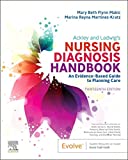
Nursing Care Plans – Nursing Diagnosis & Intervention (10th Edition)
Includes over two hundred care plans that reflect the most recent evidence-based guidelines. New to this edition are ICNP diagnoses, care plans on LGBTQ health issues, and on electrolytes and acid-base balance.
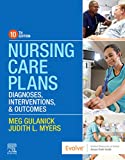
Nurse’s Pocket Guide: Diagnoses, Prioritized Interventions, and Rationales
Quick-reference tool includes all you need to identify the correct diagnoses for efficient patient care planning. The sixteenth edition includes the most recent nursing diagnoses and interventions and an alphabetized listing of nursing diagnoses covering more than 400 disorders.

Nursing Diagnosis Manual: Planning, Individualizing, and Documenting Client Care
Identify interventions to plan, individualize, and document care for more than 800 diseases and disorders. Only in the Nursing Diagnosis Manual will you find for each diagnosis subjectively and objectively – sample clinical applications, prioritized action/interventions with rationales – a documentation section, and much more!
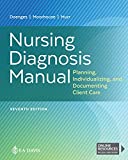
All-in-One Nursing Care Planning Resource – E-Book: Medical-Surgical, Pediatric, Maternity, and Psychiatric-Mental Health
Includes over 100 care plans for medical-surgical, maternity/OB, pediatrics, and psychiatric and mental health. Interprofessional “patient problems” focus familiarizes you with how to speak to patients.
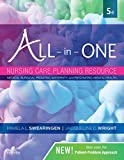
See Also
Other recommended site resources for this nursing care plan:
- Nursing Care Plans (NCP): Ultimate Guide and Database MUST READ!
Over 150+ nursing care plans for different diseases and conditions. Includes our easy-to-follow guide on how to create nursing care plans from scratch. - Nursing Diagnosis Guide and List: All You Need to Know to Master Diagnosing
Our comprehensive guide on how to create and write diagnostic labels. Includes detailed nursing care plan guides for common nursing diagnostic labels.
Other nursing care plans for cardiovascular system disorders:
- Angina Pectoris (Coronary Artery Disease)
- Cardiac Arrhythmia (Digitalis Toxicity)
- Cardiac Catheterization
- Cardiogenic Shock
- Congenital Heart Disease
- Decreased Cardiac Output & Cardiac Support
- Heart Failure
- Hypertension
- Hypovolemic Shock
- Impaired Tissue Perfusion & Ischemia
- Myocardial Infarction
- Pacemaker Therapy
References and Sources
Recommended journals, books, and other interesting materials to help you learn more about heart failure nursing care plans and nursing diagnosis:
- Albert, N. M. (2012). Fluid management strategies in heart failure. Critical care nurse, 32(2), 20-32.
- Albert, N., Trochelman, K., Li, J., & Lin, S. (2010). Signs and symptoms of heart failure: are you asking the right questions?. American Journal of Critical Care, 19(5), 443-452.
- Alkhawam, H., Abo-Salem, E., Zaiem, F., Ampadu, J., Rahman, A., Sulaiman, S., … & Vittorio, T. J. (2019). Effect of digitalis level on readmission and mortality rate among heart failure reduced ejection fraction patients. Heart & Lung, 48(1), 22-27.
- Allen, J. K., & Dennison, C. R. (2010). Randomized trials of nursing interventions for secondary prevention in patients with coronary artery disease and heart failure: systematic review. Journal of Cardiovascular Nursing, 25(3), 207-220.
- Amin, A., Garcia Reeves, A. B., Li, X., Dhamane, A., Luo, X., Di Fusco, M., … & Keshishian, A. (2019). Effectiveness and safety of oral anticoagulants in older adults with non-valvular atrial fibrillation and heart failure. PloS one, 14(3), e0213614.
- Austin, J., Williams, R., Ross, L., Moseley, L., & Hutchison, S. (2005). Randomised controlled trial of cardiac rehabilitation in elderly patients with heart failure. European Journal of Heart Failure, 7(3), 411-417.
- Barrese, V., & Taglialatela, M. (2013). New advances in beta-blocker therapy in heart failure. Frontiers in physiology, 4, 323.
- Bikdeli, B., Strait, K. M., Dharmarajan, K., Li, S. X., Mody, P., Partovian, C., … & Krumholz, H. M. (2015). Intravenous fluids in acute decompensated heart failure. JACC: Heart Failure, 3(2), 127-133.
- Bocchi, E. A. (2001). Cardiomyoplasty for treatment of heart failure. European journal of heart failure, 3(4), 403-406.
- Bolger, A. P., Coats, A. J., & Gatzoulis, M. A. (2003). Congenital heart disease: the original heart failure syndrome. European Heart Journal, 24(10), 970-976.
- Brater, D. C. (2000). Pharmacology of diuretics. The American journal of the medical sciences, 319(1), 38-50.
- Brennan, E. J. (2018). Chronic heart failure nursing: integrated multidisciplinary care. British Journal of Nursing, 27(12), 681-688.
- Brunner, L. S. (2010). Brunner & Suddarth’s textbook of medical-surgical nursing (Vol. 1). Lippincott Williams & Wilkins.
- Butler, J., Young, J. B., Abraham, W. T., Bourge, R. C., Adams, K. F., Clare, R., … & ESCAPE Investigators. (2006). Beta-blocker use and outcomes among hospitalized heart failure patients. Journal of the American College of Cardiology, 47(12), 2462-2469.
- Cattadori, G., Segurini, C., Picozzi, A., Padeletti, L., & Anzà, C. (2018). Exercise and heart failure: an update. ESC heart failure, 5(2), 222-232.
- Chew, H. S. J., Sim, K. L. D., & Cao, X. (2019). Motivation, challenges and self-regulation in heart failure self-care: a theory-driven qualitative study. International journal of behavioral medicine, 26(5), 474-485.
- Conti, C. R. (2011). Intravenous morphine and chest pain. Clinical cardiology, 34(8), 464.
- Cowie, M. R., & Mendez, G. F. (2002). BNP and congestive heart failure. Progress in cardiovascular diseases, 44(4), 293-321.
- De Bruyne, L. K. M. (2003). Mechanisms and management of diuretic resistance in congestive heart failure. Postgraduate medical journal, 79(931), 268-271.
- De Jong, M. J., Chung, M. L., Wu, J. R., Riegel, B., Rayens, M. K., & Moser, D. K. (2011). Linkages between anxiety and outcomes in heart failure. Heart & Lung, 40(5), 393-404.
- Drazner, M. H., Rame, J. E., & Dries, D. L. (2003). Third heart sound and elevated jugular venous pressure as markers of the subsequent development of heart failure in patients with asymptomatic left ventricular dysfunction. The American journal of medicine, 114(6), 431-437.
- Elkayam, U., Akhter, M. W., Tummala, P., Khan, S., & Singh, H. (2002). Nesiritide: a new drug for the treatment of decompensated heart failure. Journal of cardiovascular pharmacology and therapeutics, 7(3), 181-194.
- Ellison, D. H., & Felker, G. M. (2017). Diuretic treatment in heart failure. New England Journal of Medicine, 377(20), 1964-1975.
- Enright, P. L. (2003). The six-minute walk test. Respiratory care, 48(8), 783-785.
- Faris, R. F., Flather, M., Purcell, H., Poole‐Wilson, P. A., & Coats, A. J. (2012). Diuretics for heart failure. Cochrane Database of Systematic Reviews, (2).
- Felker, G. M., Ellison, D. H., Mullens, W., Cox, Z. L., & Testani, J. M. (2020). Diuretic therapy for patients with heart failure: JACC state-of-the-art review. Journal of the American College of Cardiology, 75(10), 1178-1195.
- Fletcher, G. F., Balady, G. J., Amsterdam, E. A., Chaitman, B., Eckel, R., Fleg, J., … & Bazzarre, T. (2001). Exercise standards for testing and training: a statement for healthcare professionals from the American Heart Association. Circulation, 104(14), 1694-1740.
- Friederich, J. A., & Butterworth, J. F. (1995). Sodium nitroprusside: twenty years and counting. Anesthesia & Analgesia, 81(1), 152-162.
- Gao, X., Peng, L., Adhikari, C. M., Lin, J., & Zuo, Z. (2007). Spironolactone reduced arrhythmia and maintained magnesium homeostasis in patients with congestive heart failure. Journal of cardiac failure, 13(3), 170-177.
- Giordano, F. J. (2005). Oxygen, oxidative stress, hypoxia, and heart failure. The Journal of clinical investigation, 115(3), 500-508.
- Grady, K. L., Dracup, K., Kennedy, G., Moser, D. K., Piano, M., Stevenson, L. W., & Young, J. B. (2000). Team management of patients with heart failure: a statement for healthcare professionals from the Cardiovascular Nursing Council of the American Heart Association. Circulation, 102(19), 2443-2456.
- Haque, W. A., Boehmer, J., Clemson, B. S., Leuenberger, U. A., Silber, D. H., & Sinoway, L. I. (1996). Hemodynamic effects of supplemental oxygen administration in congestive heart failure. Journal of the American College of Cardiology, 27(2), 353-357.
- Herman, L. L., & Tivakaran, V. S. (2017). Hydralazine.
- Hinkle, J. L., & KH, C. (2017). Brunner & Suddarth’s textbook of medical‑surgical nursing. Vol. 1.
- Holme, M. R., & Sharman, T. (2020). Sodium nitroprusside.
- Jaarsma, T., Strömberg, A., De Geest, S., Fridlund, B., Heikkila, J., Mårtensson, J., … & Thompson, D. R. (2006). Heart failure management programmes in Europe. European Journal of Cardiovascular Nursing, 5(3), 197-205.
- Jacobs, M. (1984). Mechanism of action of hydralazine on vascular smooth muscle. Biochemical pharmacology, 33(18), 2915-2919.
- Joynt, K. E., Whellan, D. J., & O’connor, C. M. (2004). Why is depression bad for the failing heart? A review of the mechanistic relationship between depression and heart failure. Journal of cardiac failure, 10(3), 258-271.
- Jurgens, C. Y., Goodlin, S., Dolansky, M., Ahmed, A., Fonarow, G. C., Boxer, R., … & Rich, M. W. (2015). Heart failure management in skilled nursing facilities: a scientific statement from the American Heart Association and the Heart Failure Society of America. Circulation: Heart Failure, 8(3), 655-687.
- Kemp, C. D., & Conte, J. V. (2012). The pathophysiology of heart failure. Cardiovascular Pathology, 21(5), 365-371.
- Kim, W., & Kim, E. J. (2018). Heart failure as a risk factor for stroke. Journal of stroke, 20(1), 33.
- Klompstra, L., Jaarsma, T., & Strömberg, A. (2018). Self-efficacy mediates the relationship between motivation and physical activity in patients with heart failure. The Journal of cardiovascular nursing, 33(3), 211.
- Krämer, B. K., Schweda, F., & Riegger, G. A. (1999). Diuretic treatment and diuretic resistance in heart failure. The American journal of medicine, 106(1), 90-96.
- Leier, C. V., & Chatterjee, K. (2007). The physical examination in heart failure—Part I. Congestive Heart Failure, 13(1), 41-47.
- Levy, P., Compton, S., Welch, R., Delgado, G., Jennett, A., Penugonda, N., … & Zalenski, R. (2007). Treatment of severe decompensated heart failure with high-dose intravenous nitroglycerin: a feasibility and outcome analysis. Annals of emergency medicine, 50(2), 144-152.
- Lewis, P. A., Ward, D. A., & Courtney, M. D. (2009). The intra-aortic balloon pump in heart failure management: implications for nursing practice. Australian critical care, 22(3), 125-131.
- Maisel, W. H., & Stevenson, L. W. (2003). Atrial fibrillation in heart failure: epidemiology, pathophysiology, and rationale for therapy. The American journal of cardiology, 91(6), 2-8.
- Masip, J., Gayà, M., Páez, J., Betbesé, A., Vecilla, F., Manresa, R., & Ruíz, P. (2012). Pulse oximetry in the diagnosis of acute heart failure. Revista Española de Cardiología (English Edition), 65(10), 879-884.
- Milo-Cotter, O., Cotter, G., Kaluski, E., Rund, M. M., Felker, G. M., Adams, K. F., … & Weatherley, B. D. (2009). Rapid Clinical Assessment of Patients with Acute Heart Failure: First Blood Pressure and Oxygen Saturation–Is That All We Need?. Cardiology, 114(1), 75-82.
- Mullens, W., Abrahams, Z., Francis, G. S., Skouri, H. N., Starling, R. C., Young, J. B., … & Tang, W. W. (2008). Sodium nitroprusside for advanced low-output heart failure. Journal of the American College of Cardiology, 52(3), 200-207.
- Nicholson, C. (2007). Heart failure: A clinical nursing handbook (Vol. 31). John Wiley & Sons.
- Nyolczas, N., Dekany, M., Muk, B., & Szabo, B. (2017). Combination of hydralazine and isosorbide-dinitrate in the treatment of patients with heart failure with reduced ejection fraction. Heart Failure: From Research to Clinical Practice, 31-45.
- Oh, S. W., & Han, S. Y. (2015). Loop diuretics in clinical practice. Electrolytes & Blood Pressure, 13(1), 17-21.
- Pereira, J. D. M. V., Cavalcanti, A. C. D., Lopes, M. V. D. O., Silva, V. G. D., Souza, R. O. D., & Gonçalves, L. C. (2015). Accuracy in inference of nursing diagnoses in heart failure patients. Revista brasileira de enfermagem, 68, 690-696.
- Picano, E., Gargani, L., & Gheorghiade, M. (2010). Why, when, and how to assess pulmonary congestion in heart failure: pathophysiological, clinical, and methodological implications. Heart failure reviews, 15(1), 63-72.
- Piña, I. L., Apstein, C. S., Balady, G. J., Belardinelli, R., Chaitman, B. R., Duscha, B. D., … & Sullivan, M. J. (2003). Exercise and heart failure: a statement from the American Heart Association Committee on exercise, rehabilitation, and prevention. Circulation, 107(8), 1210-1225.
- Platz, E., Merz, A. A., Jhund, P. S., Vazir, A., Campbell, R., & McMurray, J. J. (2017). Dynamic changes and prognostic value of pulmonary congestion by lung ultrasound in acute and chronic heart failure: a systematic review. European journal of heart failure, 19(9), 1154-1163.
- Qamer, S. Z., Malik, A., Bayoumi, E., Lam, P. H., Singh, S., Packer, M., … & Ahmed, A. (2019). Digoxin use and outcomes in patients with heart failure with reduced ejection fraction. The American journal of medicine, 132(11), 1311-1319.
- Redeker, N. S., Adams, L., Berkowitz, R., Blank, L., Freudenberger, R., Gilbert, M., … & Rapoport, D. (2012). Nocturia, sleep and daytime function in stable heart failure. Journal of Cardiac Failure, 18(7), 569-575.
- Reid, M. B., & Cottrell, D. (2005). Nursing care of patients receiving: Intra-aortic balloon counterpulsation. Critical care nurse, 25(5), 40-49.
- Rogers, C., & Bush, N. (2015). Heart failure: Pathophysiology, diagnosis, medical treatment guidelines, and nursing management. The Nursing Clinics of North America, 50(4), 787-799.
- Rutledge, T., Reis, V. A., Linke, S. E., Greenberg, B. H., & Mills, P. J. (2006). Depression in heart failure: a meta-analytic review of prevalence, intervention effects, and associations with clinical outcomes. Journal of the American college of Cardiology, 48(8), 1527-1537.
- Scott, L. D., Setter-Kline, K., & Britton, A. S. (2004). The effects of nursing interventions to enhance mental health and quality of life among individuals with heart failure. Applied Nursing Research, 17(4), 248-256.
- Serber, S. L., Rinsky, B., Kumar, R., Macey, P. M., Fonarow, G. C., & Harper, R. M. (2014). Cerebral blood flow velocity and vasomotor reactivity during autonomic challenges in heart failure. Nursing research, 63(3), 194.
- Sica, D. A., Carter, B., Cushman, W., & Hamm, L. (2011). Thiazide and loop diuretics. The journal of clinical hypertension, 13(9), 639-643.
- Volterrani, M., & Iellamo, F. (2016). Cardiac Rehabilitation in patients with heart failure: New perspectives in exercise training. Cardiac failure review, 2(1), 63.
- Yancy, C. W., Jessup, M., Bozkurt, B., Butler, J., Casey Jr, D. E., Colvin, M. M., … & Westlake, C. (2017). 2017 ACC/AHA/HFSA focused update of the 2013 ACCF/AHA guideline for the management of heart failure: a report of the American College of Cardiology/American Heart Association Task Force on Clinical Practice Guidelines and the Heart Failure Society of America. Journal of the American College of Cardiology, 70(6), 776-803.
- Zhao, X., Zhang, D. Q., Song, R., & Zhang, G. (2020). Nesiritide in patients with acute myocardial infarction and heart failure: a meta-analysis. Journal of International Medical Research, 48(1), 0300060519897194.
- Ziaeian, B., Fonarow, G. C., & Heidenreich, P. A. (2017). Clinical effectiveness of hydralazine–isosorbide dinitrate in African-American patients with heart failure. JACC: Heart Failure, 5(9), 632-639.
First published on July 14, 2013.
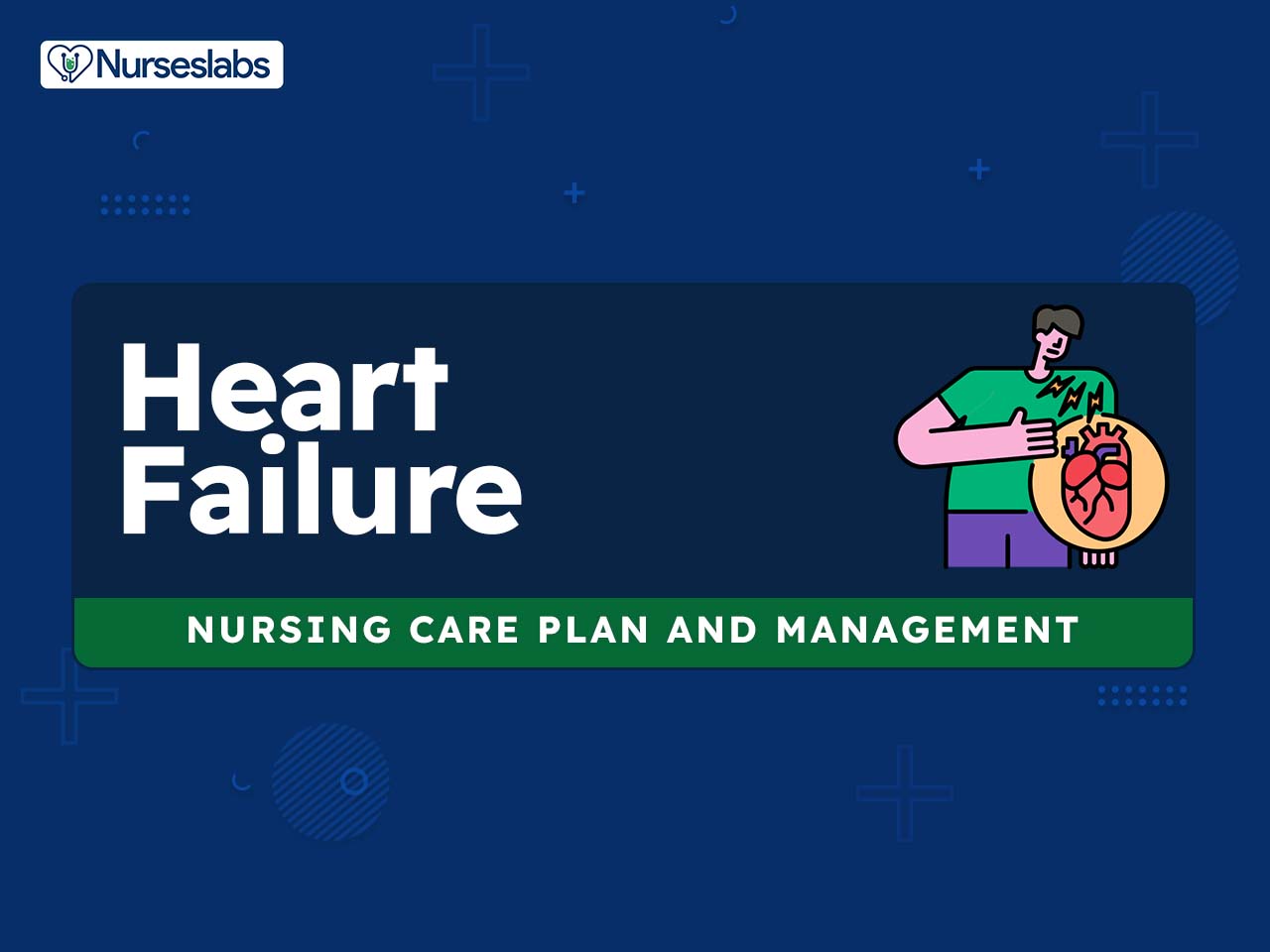
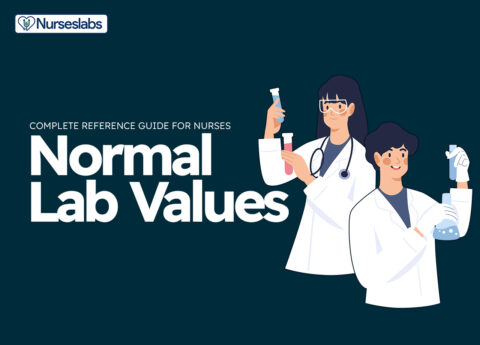
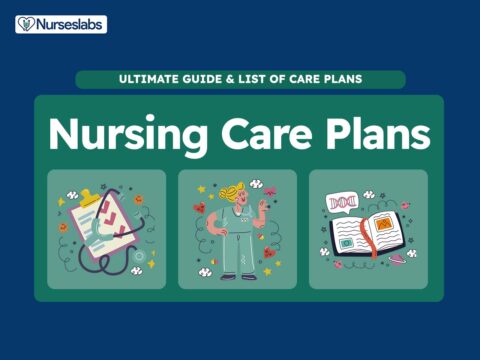
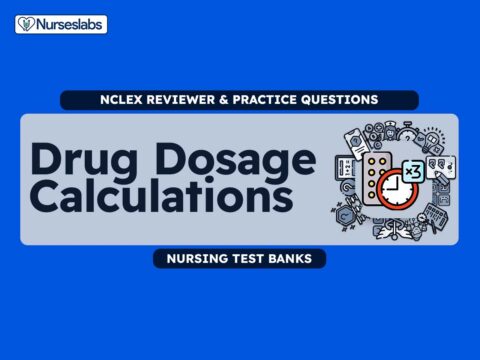





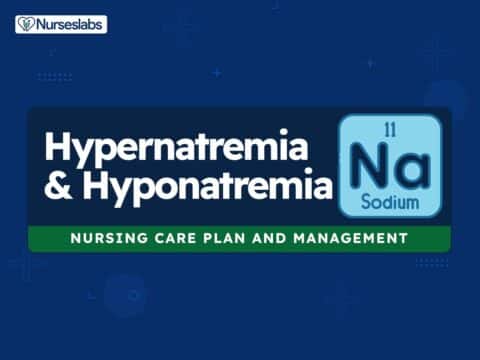


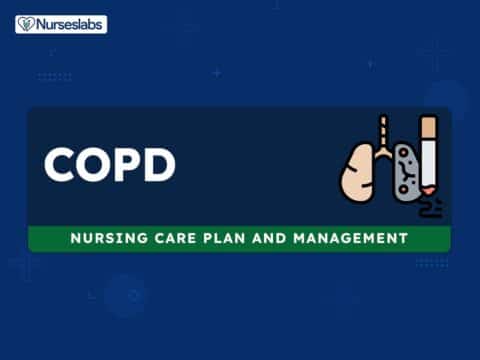
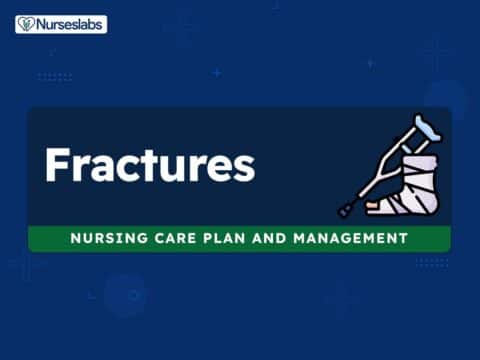
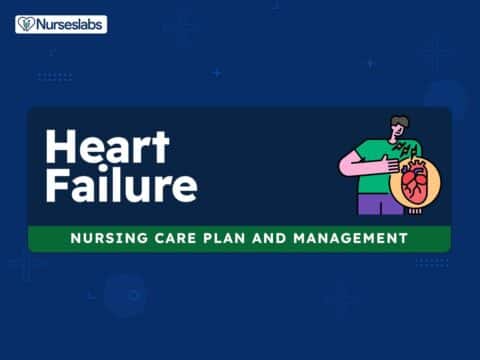
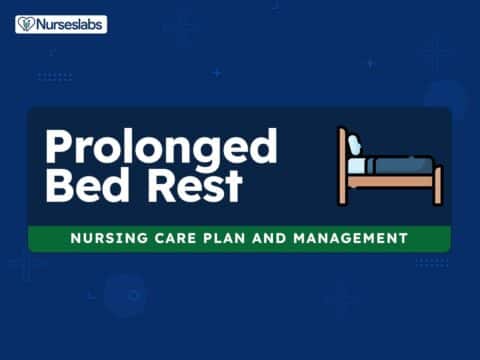
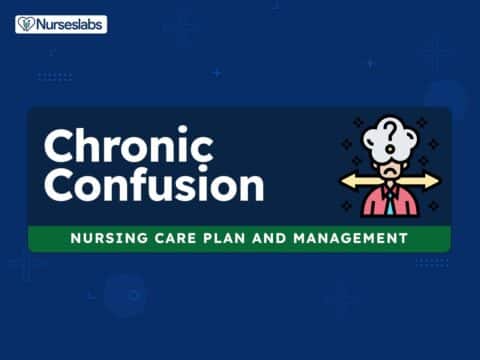
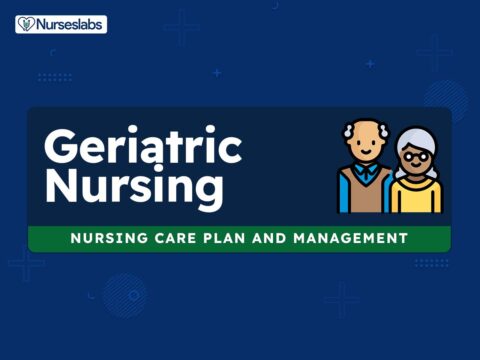
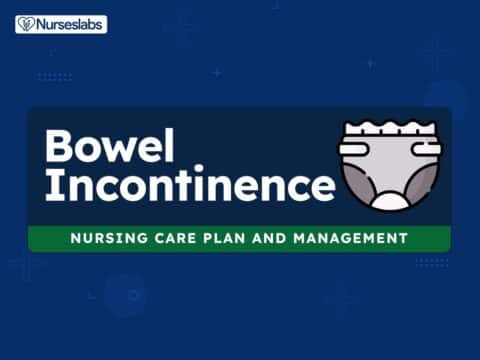
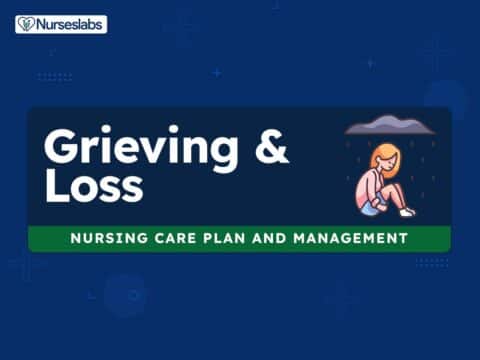
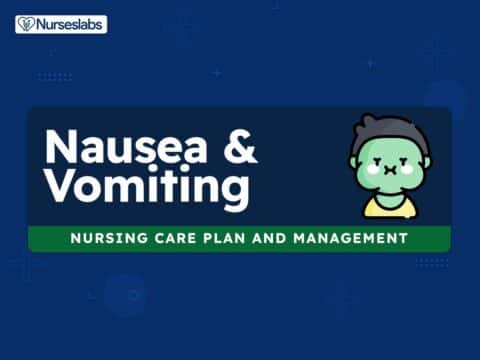
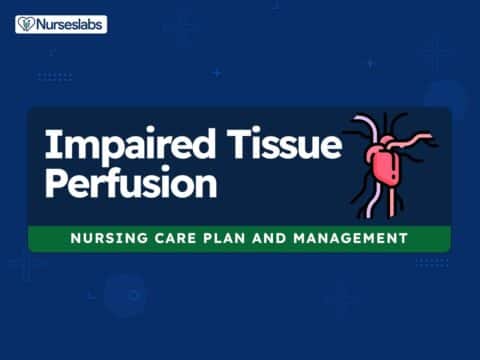

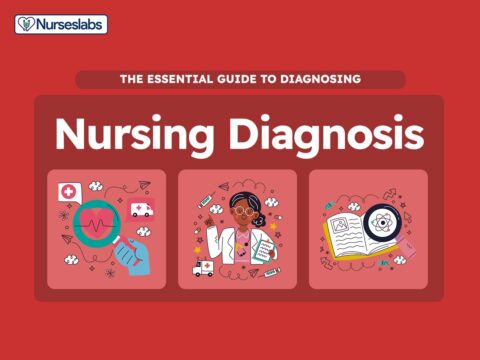

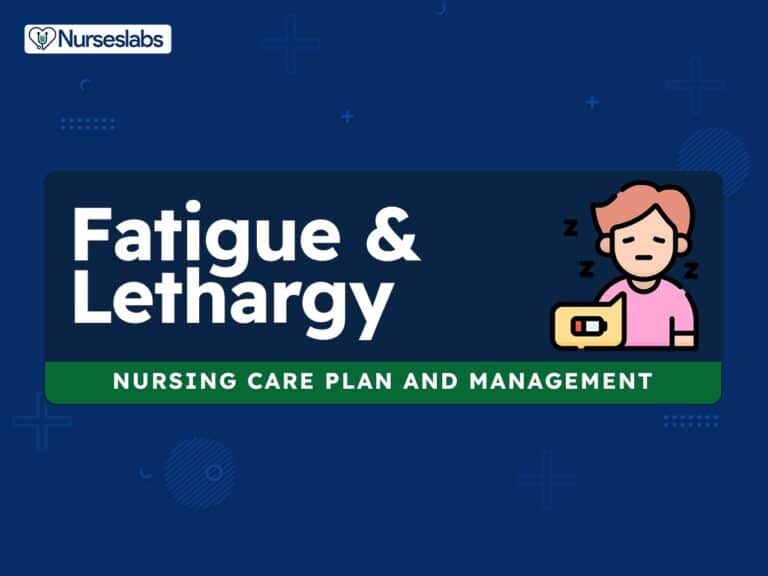
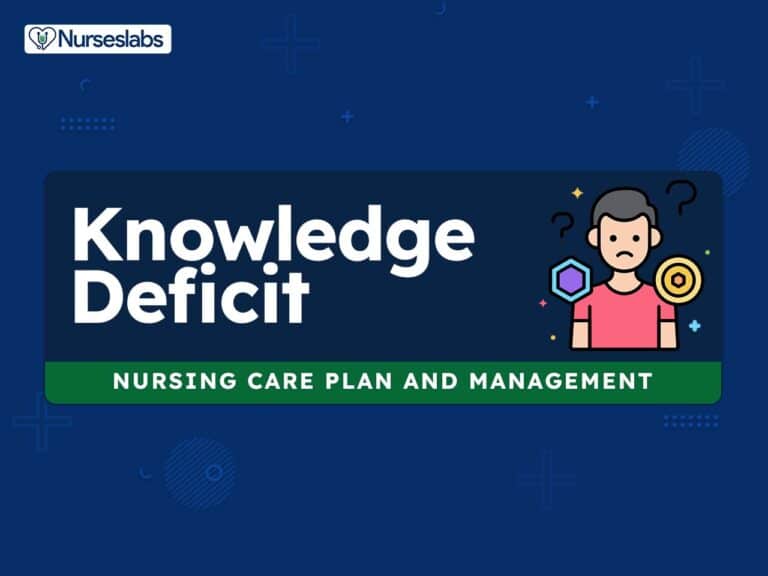
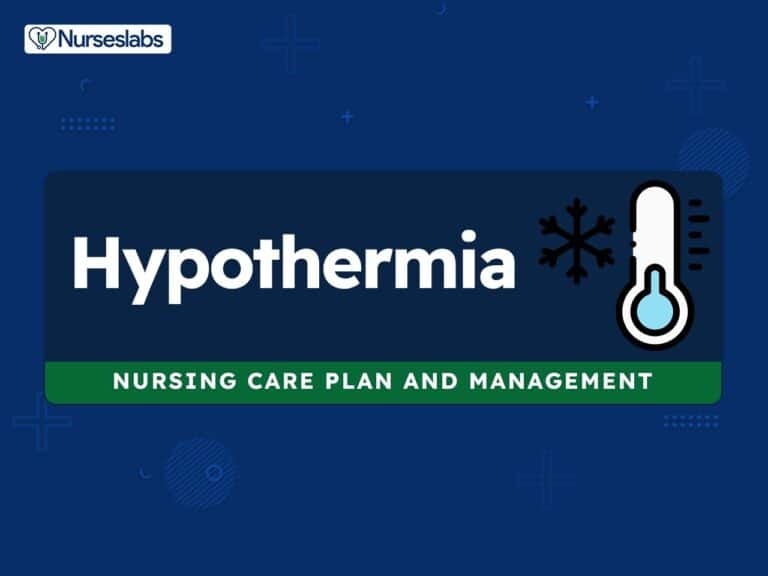

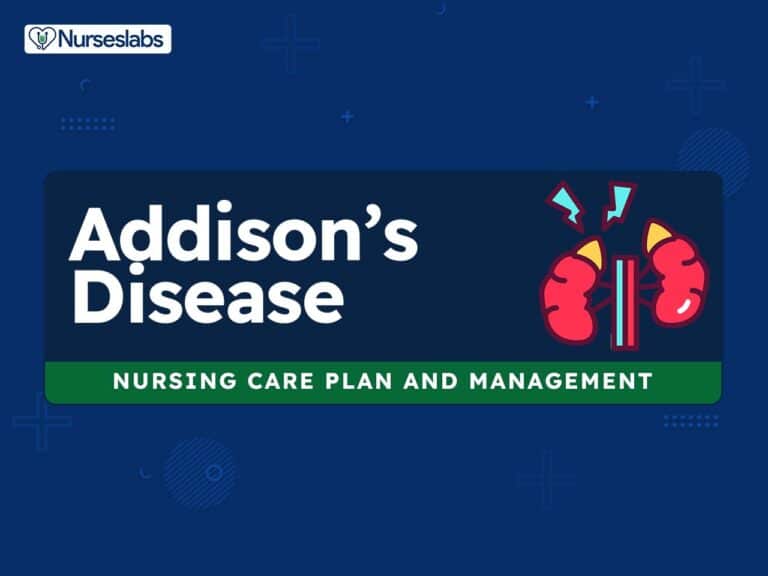


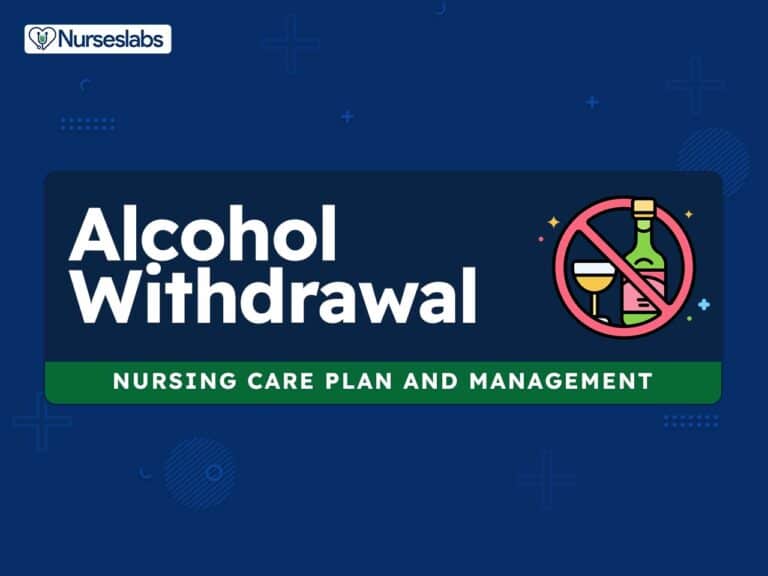



Leave a Comment